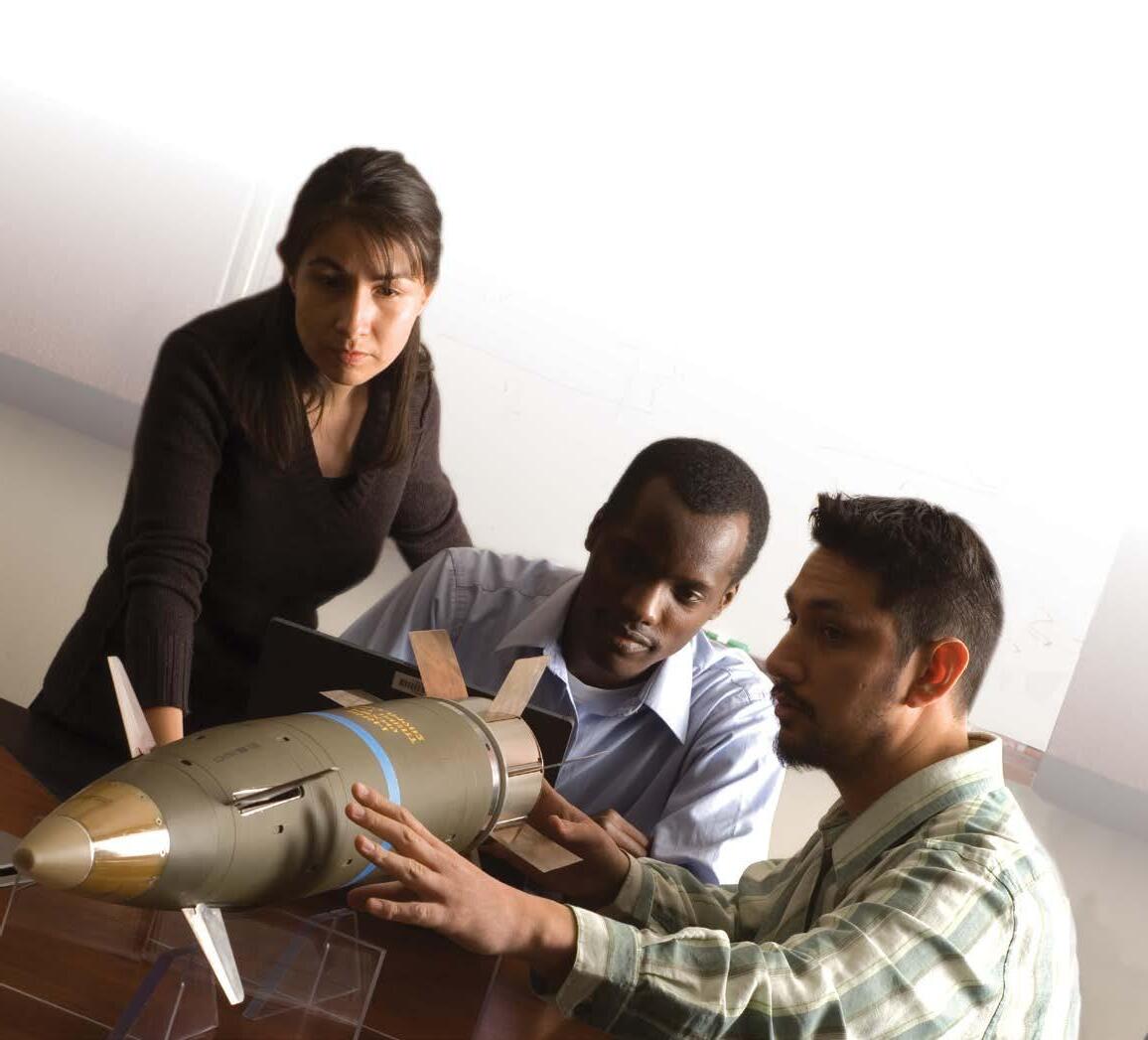
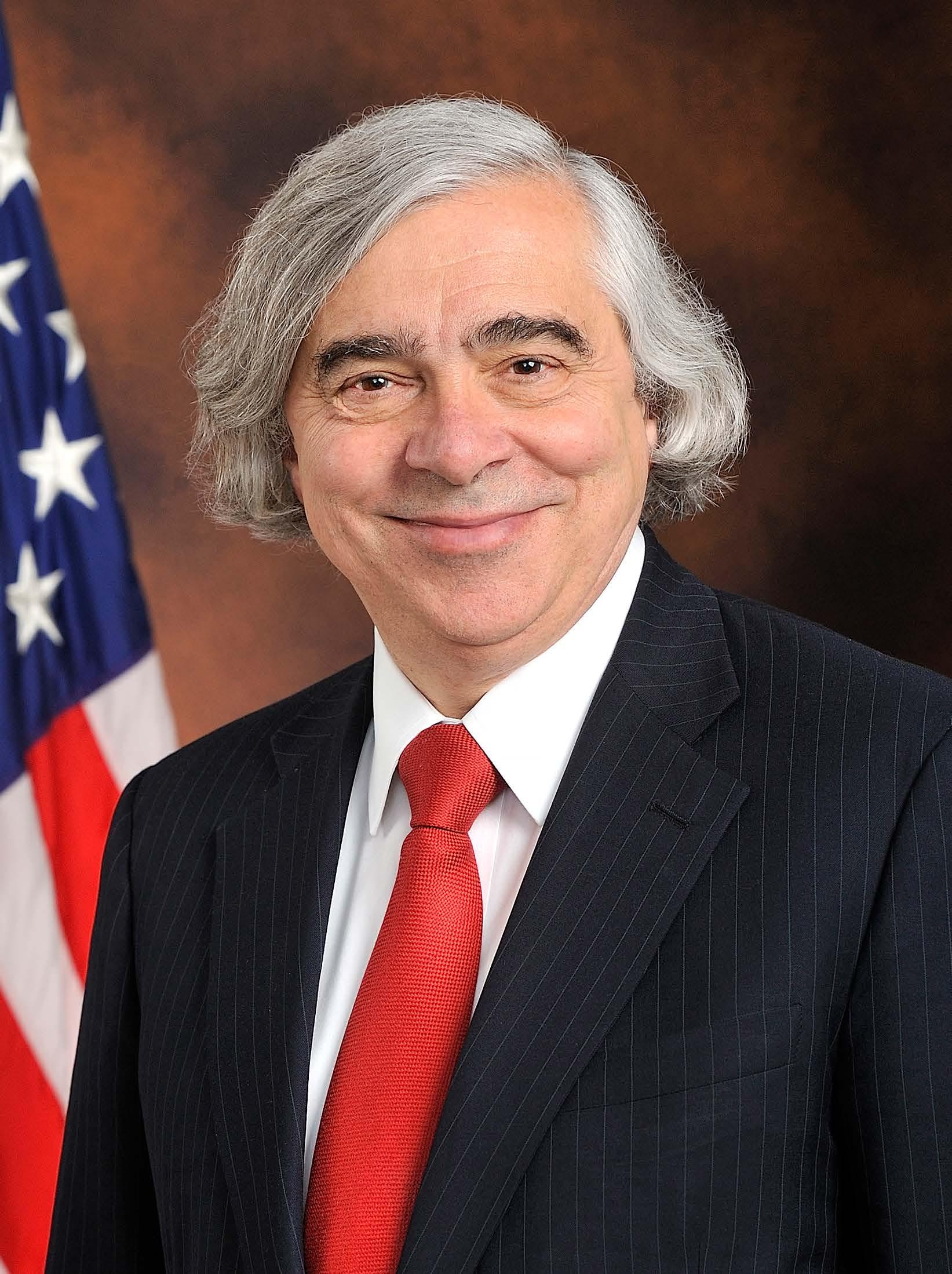
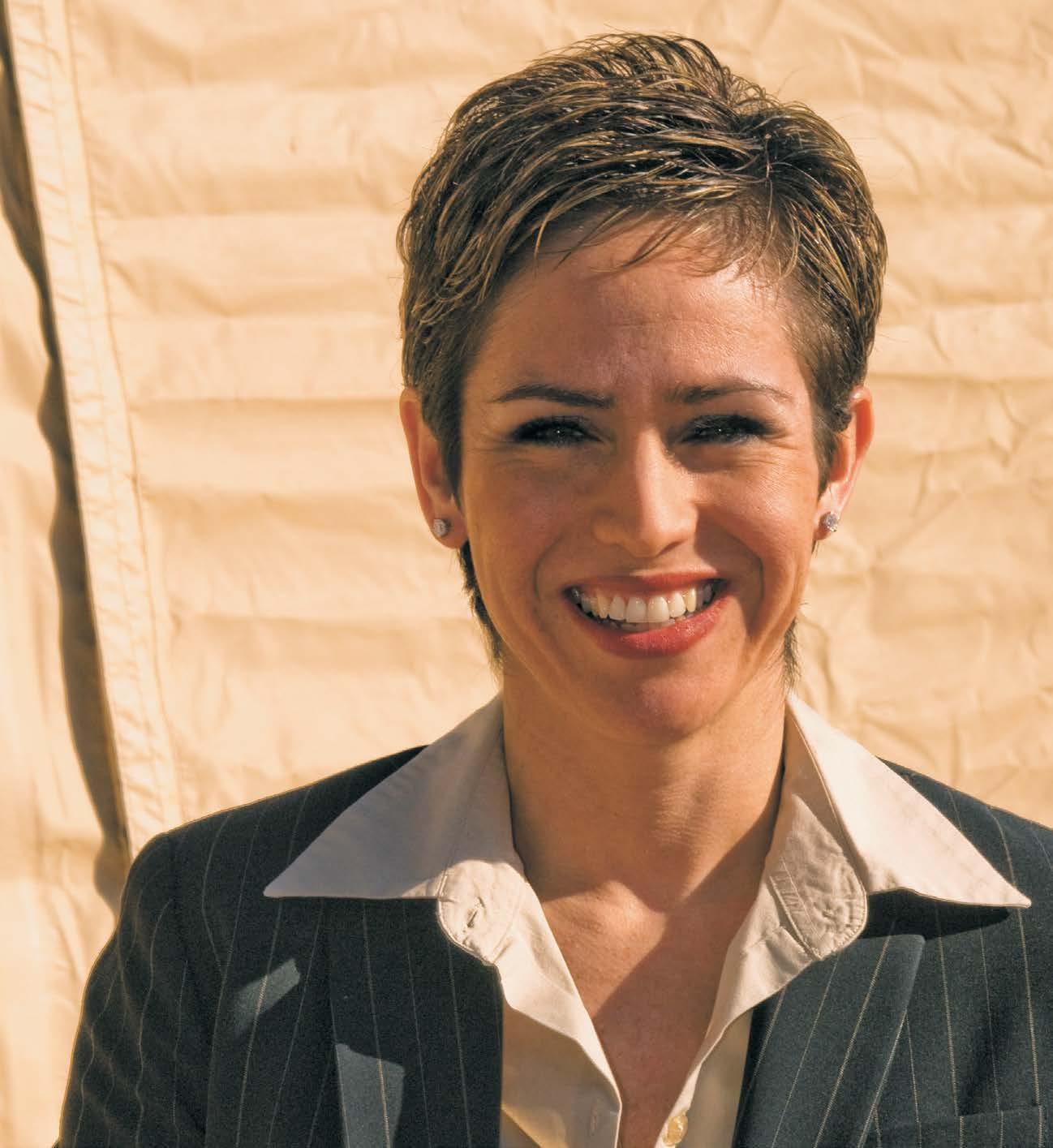
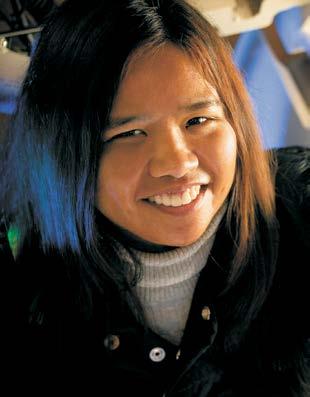
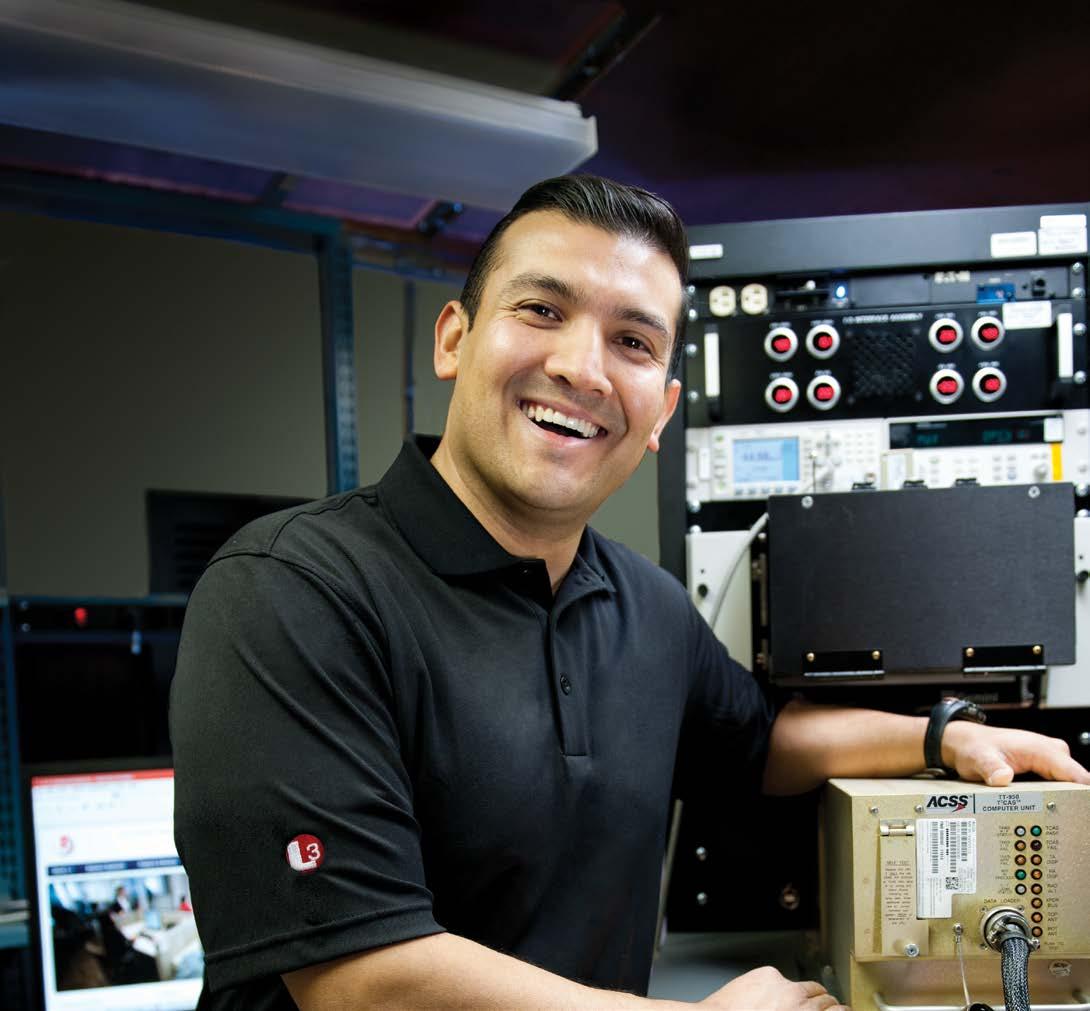






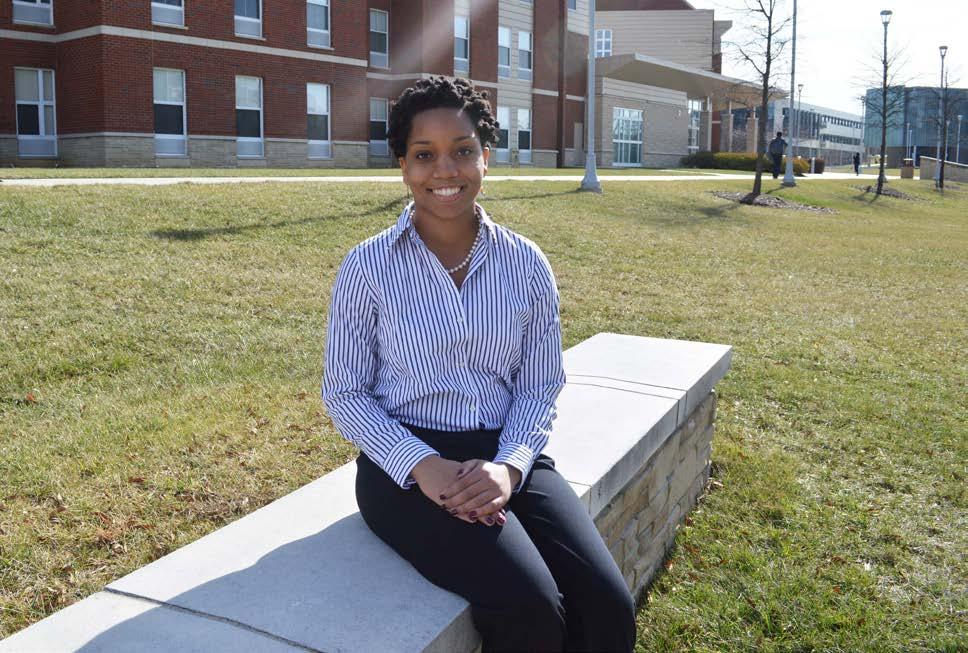

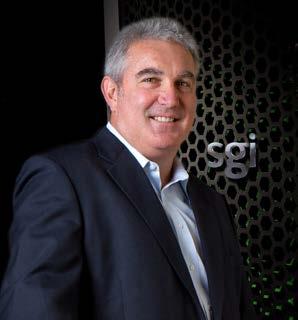


One on One ................... 9
Secretary of Energy
Dr. Ernest Moniz addresses energy, environmental and nuclear challenges through transformative science and technology solutions.
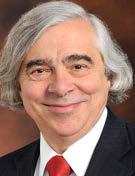
.............. 13
Voices spotlights tips and advice from a professional who has navigated the career maze.
........ 6
Hispanic higher education and HSIs by the numbers
................... 27
Internships are on the rise and a gateway to the workforce. First Steps is a 360-degree narrative of the internship experience from application to workplace.
........... 33
Women and minorities in energy - oil, petroleum, fuel, natural gas, coal, electrical power, nuclear, renewable energy, hydroelectric power, wind power, and solar power generation
- Job Horizon
- Landing a Job in Energy
- Energy Rising Stars. Where does the energy sector find its next-gen stars?
College Marketplace
- STEM Student Survival Guide
- Corporate College Recruiting Schedule
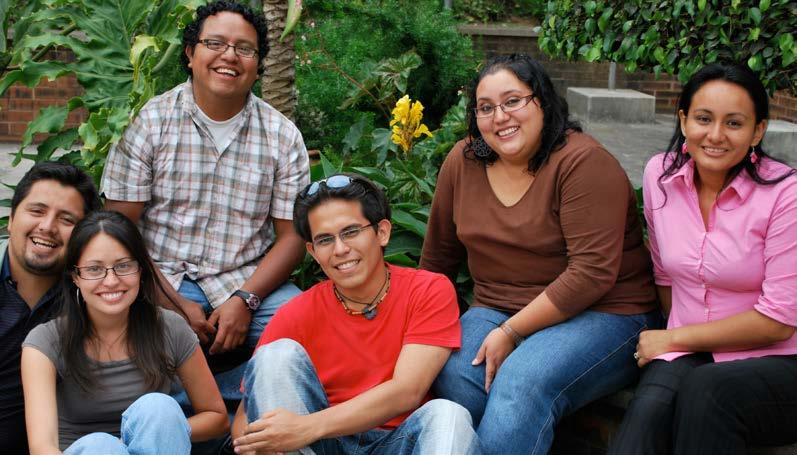
By the time you read this, an estimated 22 million people will be enrolled in American colleges and universities. As you get settled in with classes and backto-school activities, you’re probably also planning to meet scores of employers who will come to campus to recruit students for full-time and internship opportunities.
Too early to think of 2015 internships? Well, no. In partnership with top U.S. employers, colleges hold some of the largest career fairs in the fall to recruit qualified applicants interested in part-time opportunities as well as internships. Inside, you’ll meet students and alumni who put themselves in the driver’s seat with advance planning.
Take Alex Killam, an electronic engineering major at Norfolk State University who interned at Chrysler in Auburn Hills, Michigan. This summer, he worked with a vehicle integration team, testing the 2015 police Dodge Charger, as well as the 2015 police Ram and 2015 police Dodge Durango. Killam got his summer job after he met with Chrysler representatives at the BEYA STEM fair in February 2014. He actually received two internship offers from Chrysler in engineering and manufacturing.
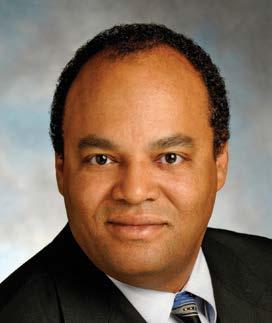
Internships are the gateway to meaningful jobs for STEM (science, technology, engineering and mathematics) students.
Those who design corporate internship programs are doing their utmost to bring that perfect candidate into their organizations because in an increasingly interconnected world where doing business globally is now the norm, interns are a critical part of the human resources talent pool that sustains and grows companies.
Cover to cover, this back-to-school issue contains all the strategies you’ll need: tips for landing the best internships, first-person narrative of the internship experience, tips for college success, as well as advice from professionals who have navigated the career maze: from intern to executive officers in some of the largest energy companies in America.

Publisher and Editor-in-chief

Volume 29 Number 2
EXECUTIVE OFFICE
& INFORMATION TECHNOLOGY
https://checkout.subscriptiongenius.com/ccgmag.com/
Hispanic Engineer & Information Technology, (ISSN 10883452) is a publication devoted to science and technology, and to promoting opportunities in STEM fields for Hispanic Americans. This publication is bulk mailed to universities and colleges nationwide and in Puerto Rico. The editors invite editorial submissions directed toward the goals of Hispanic Engineer & Information Technology. In particular, HE&IT magazine wishes to present ideas, current events, and personality profiles of successful Hispanic Americans in science, technology, and related business pursuits. Fully developed articles may be sent, but queries are strongly encouraged. Articles and letters should be sent to: Hispanic Engineer & Information Technology, Editorial Department, 729 E. Pratt Street, Suite 504, Baltimore, MD 21202. No manuscript will be returned unless accompanied by a stamped, self-addressed envelope. Hispanic Engineer & Information Technology cannot be responsible for unsolicited material. Copyright © 2014 by Career Communications Group, Inc. All rights reserved. Printed in the U.S.A.
EDITORIAL
GRAPHIC DESIGN
CORPORATE DEVELOPMENT
Tyrone D. Taborn
Publisher and Editorial Director
Jean Hamilton
President and CFO
Rayondon Kennedy
Assistant Editor
Lango Deen
Contributing Editor
Michael Fletcher
Contributing Editor
Gale Horton Gay
Contributing Editor
M.V. Greene
Contributing Editor
Frank McCoy
Contributing Editor
Garland L. Thompson
Contributing Editor
Roger Witherspoon
Contributing Editor
Sherley Petit-Homme
Art Director
Bryan Clapper
Graphic Designer
Eric Price
Vice President, Recruitment and Training
Ty Taborn
Corporate Development
Imani Carter
Corporate Communications Specialist
Brian Irving
Diversity Outreach
SALES AND MARKETING
ADMINISTRATION
CONFERENCE AND EVENTS
Alex Venetta
Associate Publisher, Manager of Partner Services
Gwendolyn Bethea
Vice President, Corporate Development
Sandra Harris
Senior Account Manager
Kehinde Akiwowo
Senior Account Manager
Ana Bertrand
Conference Coordinator
Rutherford & Associates 17304 Preston Rd
ADVERTISING SALES OFFICE
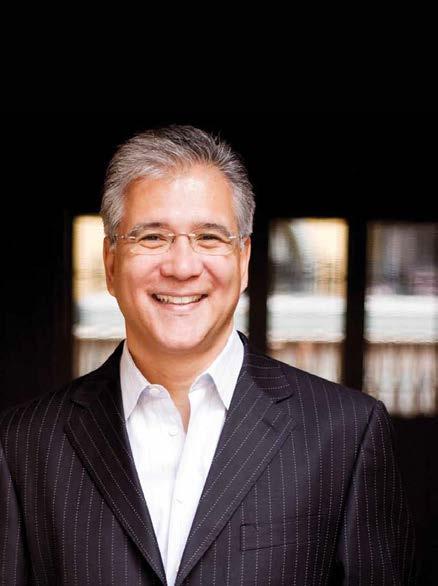

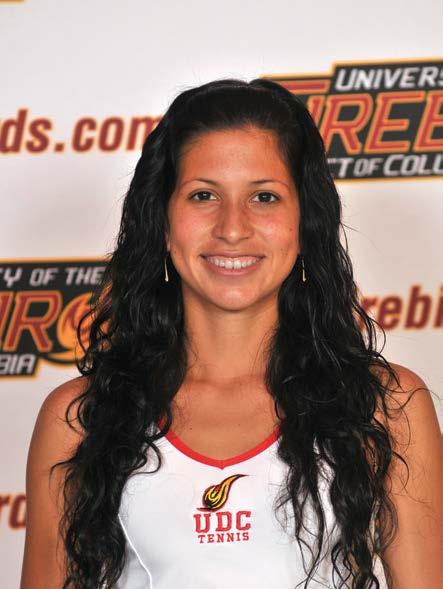

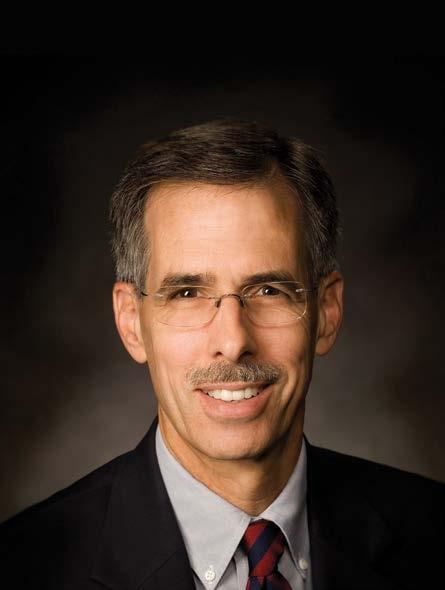
The Chancellor of InterAmerican University of Puerto Rico, San Germán, Agnes Mojica, and Alexander Gonzalez, president of California State University, Sacramento, will be inducted into the Hispanic Association of Colleges and Universities (HACU) “Hall of Champions” during HACU’s annual conference in October. Expected to draw more than 1,500, participants will include college and university presidents and CEOs, academic and community leaders, government officials, corporate and business leaders, and college student leaders and scholars.
Facebook’sSheryl Sandberg joins the list of leading corporate executives to speak at Hispanic-serving Institutions. This past May, Sandberg delivered the commencement address at the City Colleges of Chicago.
Sandberg, Facebook COO and author of New York Times bestseller Lean In: Women, Work and the Will to Lead delivered the address at the City Colleges of Chicago graduation ceremony. Prior to the ceremony, Sandberg met with a group of graduates to learn how they have overcome personal challenges and “leaned in” to accomplish their goals.
Sandberg said, “I’m thrilled for the opportunity to speak at the City Colleges of Chicago commencement. Since Chancellor Cheryl Hyman launched the Reinvention initiative in 2010, the number of degrees granted by CCC has nearly doubled and last year, for the first time, over 10,000 graduates completed a course of study. Chancellor Hyman and I have also spoken about the importance of STEM as not just an important area of study but also as an essential element to nearly every discipline.”
In 2010, Chancellor Hyman launched the City Colleges’ “Reinvention” initiative—a comprehensive effort to improve all aspects of the seven-campus community college system. Its four goals are to increase the number of students earning degrees, increase the transfer rate to
“HACU is honored to recognize Chancellor Agnes Mojica and President Alexander Gonzalez, two remarkable individuals who have devoted their careers to enhancing opportunities for students and have been tireless champions for Hispanic higher education success,” said HACU President and CEO Antonio R. Flores.
HACU represents more than 450 colleges and universities committed to Hispanic higher education success in the U.S., Puerto Rico, Latin America and Spain.

four-year institutions, improve outcomes for students needing remediation and increase the number of adult education and English as a second language students advancing to college-level courses.
In 2011, Chicago Mayor Rahm Emanuel and Chancellor Hyman launched the College to Careers initiative to ensure City Colleges’ occupational programs are aligned with market demand. College to Careers has enabled faculty and staff to work closely with more than 150 industry leaders and four-year colleges to revamp curricula, consult on facility upgrades, provide teacher-practitioners, and offer students internships and first pass at job interviews. The programs focus on the
six core industries expected to create 80 percent of the Chicago region’s livingwage jobs in the next decade: advanced manufacturing, business and professional services, culinary/hospitality, information technology, healthcare, and transportation, distribution and logistics. More than 1,200 students have found a job or paid internship in a College to Careers field since the program’s launch.
Through the College to Careers and other City Colleges programs, students learn the skills needed to succeed on the job including soft skills such as working within a team, asserting their opinions to solve problems on the job, and networking effectively.
Hispanic demographics:
53
53.0 million Hispanics in U.S. in 2012, plus 3.6 million in Puerto Rico.
17
17 percent of U.S. population.
50
50 percent growth from 2000-2012, largest of all population groups except Asian Americans.
27.4
Median age is 27.4 for Hispanics, compared to 36.8 for the population as a whole.
50+
More than 50 percent of the nation’s Hispanics live in California, Florida and Texas. Adding New York, Arizona, Illinois, New Jersey, and Colorado accounts for over 75% of all Hispanics.
Hispanic population growth from 2000-2010 has been most rapid in the South and Midwest.
1 trillion
2010 purchasing power of U.S. Hispanics was $1 trillion, projected to reach $1.5 trillion by 2015.
Hispanic academic attainment:
33.8
33.8 percent of Hispanics 25 and over have not completed high school as of 2013, compared to 7.1 percent of non-Hispanic whites.
15.1
15.1 percent of Hispanics have at least a bachelor’s degree and 4.3 percent an advanced degree, as of 2013, compared to 35.2 percent and 12.9 percent for non-Hispanic whites.
70.3
70.3 percent of Hispanic high school graduates ages 16-24 were enrolled in college in 2012, compared to 65.7 percent for Whites.
Hispanic higher education: 2.76 million
2.76 million Hispanics were enrolled in non-profit institutions in 2012, including Puerto Rico.
51
51 percent (1,308,703) of Hispanic undergraduate students attend twoyear institutions (compared to 41.7 percent of all undergraduates).
Hispanic-Serving Institutions (HSIs):
25
Defined by the Higher Education Act as degree-granting institutions with Full-Time Equivalent undergraduate enrollments at least 25 percent Hispanic.
370
In 2012, 370 institutions met the federal enrollment criterion, enrolling 1,579,152 Hispanics.
11
HSIs are 11 percent of non-profit colleges and universities, yet enroll 18.2% of all students and 57.1 percent of all Hispanic students.
69
HSIs receive 69 cents for every dollar going to all other colleges and universities annually, per student, from all federal funding sources.
137
The number of HSIs is rapidly growing, from 137 institutions in 1990 to 172 in 1995, to 230 in 2000, to 253 in 2005, and 370 in 2012.
48
Of the 370 HSIs in 2012, 178 (48 percent) were public two-year institutions, 72 public four-year institutions,





by Michael A. Fletcher mfletcher@ccgmag.com
As U.S. energy secretary, Dr. Ernest Moniz is a central figure to the success of President Barack Obama’s agenda. Moniz’s job is critical to growing the economy, enhancing national security, and protecting the environment. Moniz, a physicist, professor and Washington veteran who took office last year, is a proponent of the president’s “all-of-the-above” energy strategy. He is also the Obama administration’s pointperson when it comes to maintaining the nuclear deterrent and reducing the nuclear danger, promoting American leadership in science and clean energy technology innovation, and cleaning up the nuclear waste that is a lasting legacy of the Cold War.
Before coming to Washington, Moniz was the Cecil and Ida Green Professor of Physics and Engineering Systems at the Massachusetts Institute of Technology (MIT), where he was a faculty member since 1973. At MIT, he headed the Department of Physics and the Bates Linear Accelerator Center. Most recently, Dr. Moniz served as the founding director of the MIT Energy Initiative and of the MIT Laboratory for Energy and the Environment.
During the final term of the Clinton administration, Moniz was an Energy Department undersecretary, where he oversaw science and energy programs, led a comprehensive review of nuclear weapons stockpile stewardship, and served as the special negotiator for the disposition of Russian nuclear materials. From 1995 to 1997, he served as associate director for science in the Office of Science and Technology Policy in the Executive Office of the President. In addition, Moniz has served on President Obama’s Council of Advisors on Science and Technology, the Department of Defense Threat Reduction Advisory Committee, and the Blue Ribbon Commission on America’s Nuclear Future.
A Massachusetts native, Moniz earned his bachelor’s degree in physics from Boston College, and a doctorate in theoretical physics from Stanford University. He also holds honorary degrees from the University of Athens, the University of ErlangenNuremberg, Michigan State University and Universidad Pontificia de Comillas.
HE&IT recently talked to him about his policy priorities, as well as job opportunities for minorities in the energy sector. The conversation follows here:
HE&IT: You have said energy efficiency is one of your top priorities as energy secretary. Why? And is this vision hard to rally people around?
Secretary Moniz: First, I want to say that we emphasize all of the above. Efficiency is one element of that. I made a special
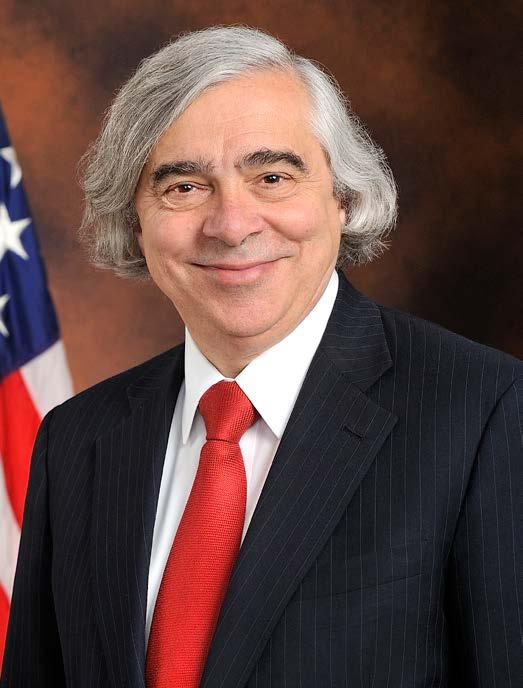
emphasis on efficiency very early on because it is pretty widely agreed that many of the nearest-term opportunities for making progress in terms of lower emissions, for example, comes through efficiency. In turn, a lot of the actions that one can take on energy efficiency pay for themselves with relatively short payback periods. That really is why we have a strong focus there. This applies in many sectors.
It applies to buildings, of course. Residential and commercial buildings use something like 70 percent of the electricity in the United States. With vehicles, you will recall that President Obama has put in place aggressive fuel efficiency standards that would require of 54.5 miles a gallon by 2025. Industry, quite frankly, tends to be ahead of the other sectors as the savings go right to the bottom line. So these are all opportunities. The way we approach them is varied.
Clearly, a lot of it is technology development. One of the real technology developments in the efficiency space that has been amazing is the continued cost reduction of LED lighting. You use about one sixth of the energy compared to incandescent

and you have a 25,000-hour lifetime, versus 1,000 hours. The costs have been dropping incredibly rapidly below $10 and in fact approaching a one-year payback period. We are responsible for efficiency standards for appliances. Cooling, heating, electric motors and the like. They all are subject to cost-benefit analysis, to make sure there is a good payback from those increased standards. And yet another very different example is implementing the weatherization program where we go out and help less affluent people improve efficiency of their homes, save on heating bills. Those are just a few of the ways that we address efficiency.
HE&IT: Are people initially excited by these ideas, or do they have to think about them first to understand their impact?
Secretary Moniz: I think it is a mix. But when you take something like the weatherization program I think people see the impact immediately, not only in reduced bills but also in comfort. I think on something like appliance standards, that tends to be not as visible to many consumers but nevertheless im-
portant. I think these appliances are saving money. Something like the LED, I get pretty excited about it, at least. One of the things with LED people notice is that they are actually a light bulb, rather than a heat bulb. In vehicles, people notice very much when they are going to the pump a lot less frequently.
HE&IT: In the early days of the Obama administration, there was a strong emphasis on renewable energy. Now the national conversation has shifted to the shale energy boom. Is the embrace of renewables being complicated by the shale energy boom?
Secretary Moniz: First of all, shale gas has been a major boom and boon, for sure. The shale gas revolution has had an enormous impact in enhancing our manufacturing capacity in the United States and creating lots of good jobs there. One of the estimates is that somewhere between $100 and $150 billion have been invested in new manufacturing capacity because of the shale gas boom. Now, those lower prices certainly have impacted other parts of the energy sector. They have had an impact on coal. We’ve seen a lot of market-based
shifts from coal to gas, with lower carbon dioxide emissions. Lower gas prices have had some impact on marginal nuclear plants, typically smaller plants. A few have closed. If you go to renewables, the extent to which gas prices fall, it can have an effect. However, we should not forget that over the past four to five years, during the shale gas boom, we have seen wind, solar and thermal double in the United States and we expect another doubling in the next five or so years.
HE&IT: What is it going to take for the nation to shift to a mostly renewable energy portfolio?
Secretary Moniz: First of all, continued price reduction is very important for all the low-carbon technologies, so we will continue to try to drive cost reduction. Secondly, we do expect that we are going to continue on a pathway to lower emissions and so the zero-carbon options will become increasingly attractive there. But, third, some of the renewables—solar, for example, lend themselves very well to distributed energy which I think is attractive to many people—roof-top solar, etc. And, of course, the commercial big-box roofs. Solar also has the attraction of tending to be maximal when the demand is highest. So it plays a very positive role in that sense in the whole electric grid system.
HE&IT: What should students be doing to prepare themselves for careers in the energy sector?
Secretary Moniz: The acronym is STEM—science, technology, engineering and mathematics. I think STEM education is very central for the career aspirations of just about anybody. But certainly in the energy field STEM is critical. Whether it is for technicians to install solar systems, or for Ph.D. researchers for the next new material and for everything in between, STEM familiarity is absolutely essential. That’s where I would say students should really focus their efforts.
HE&IT: What about for getting more minority students into energy sector jobs, is the prescription the same?
Secretary Moniz: Again, STEM education is central. That is true for anyone and certainly for minorities. l think another thing for minorities in many cases—not in all cases, obviously—is exposure to the opportunities. The president likes to speak about ladders of opportunity into middle-class jobs. And I think there is a very strong case, certainly in these last years, partly driven by the oil and gas revolutions in this country but also by the cutting-edge technologies that come into renewables and nuclear and often to efficiency as well. Those areas have provided those ladders of opportunity. If you take the oil and gas business, for example, one of the things we started here at the Department of Energy was the Minorities in Energy
Initiative, which includes an ambassadors program. Many of the ambassadors are themselves underrepresented minorities, but some are not. For example, Jack Gerard, president and executive director of the American Petroleum Institute, is an ambassador and he is dedicated to this issue of diversity. He is very dedicated to this issue because the oil and gas industry has huge manpower needs and womanpower needs over these next years and they need to attract more minorities to be able to fulfill them.
HE&IT: What are the best sources of summer jobs and internships that lead to energy careers?
Secretary Moniz: First of all, with the energy companies
“STEM education is central. That is true for anyone and certainly for minorities. l think another thing for minorities in many cases—not in all cases, obviously— is exposure to the opportunities.”
Ernest Moniz, U.S. Secretary of Energy
themselves. They offer internships, etc. I might also add that the national laboratories have summer internship programs. Some are focused specifically on minorities. I will look into this: maybe there is something we can do with our Web site that could be a good point of contact for students.
HE&IT: Our final question. Why did you want to be energy secretary. What about the job intrigued you?
Secretary Moniz: Well, a chance to serve is number one. The president is very convincing. Also, the Department of Energy has a set of missions that are areas that I have spent an awful lot of time on over a very long period of time. The department really provides the foundation for the American physical science research enterprise. In addition, advancing clean energy policies is something that I have been working on at MIT very intensively for the last decade. Also, the department is really the lead agency for nuclear security. This department has some tremendously important national missions. And they align with the president’s priorities. Most of all, the president asked and I was delighted to say yes.

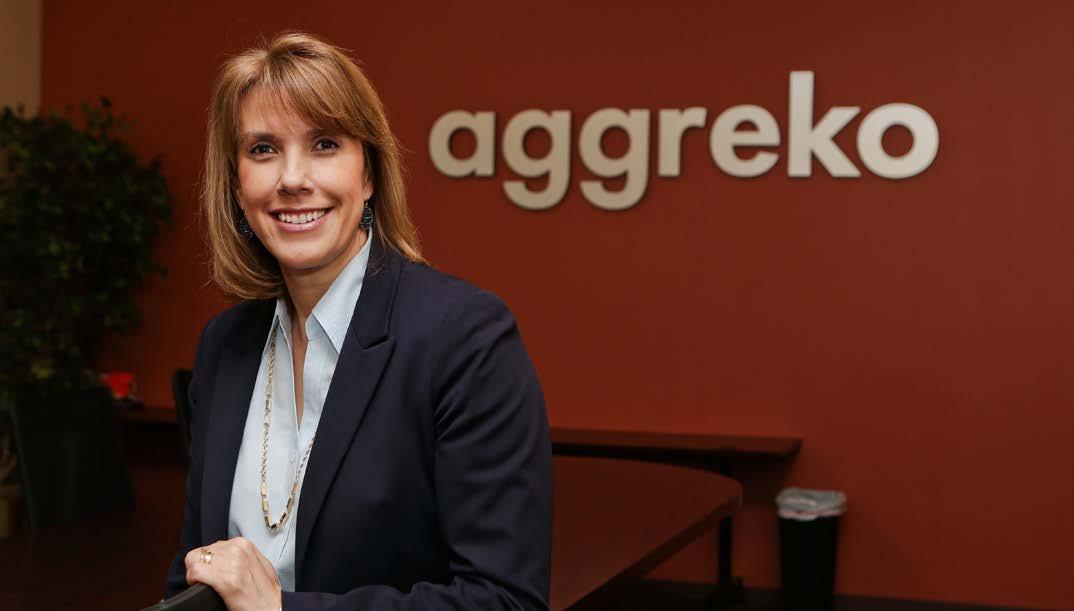
Wby Lango Deen ldeen@ccgmag.com
orking across cultures and learning all the nuances of their different backgrounds is just one of her favorite work passions, celebrates Ana Amicarella on the phone somewhere within the Aggreko U.S.-Latin American network.
As managing director for Americas Power Projects (APP), Amicarella runs Aggreko’s $350 million temporary power division manned by 800 people sprawled across North, Central, South America, and the Caribbean. With 117 locations across the Americas, APP boasts the world’s largest temporary power generator fleet.
Given her vast work territory, travel is a big requirement and she can frequently be found on the go. For instance, in just the last week of June 2014, Amicarella commuted between Houston, Texas; Panama; and Bogota, Colombia, to conduct business.
During our interview, as Amicarella speaks of her current and past experiences, her words paint a picture of an urbane and global professional, an engineer, energy executive, community leader, dedicated wife and mother.
Appointed to managing director of Aggreko’s APP division this past January, Amicarella currently oversees the very successful business of supplying not single rental generators, but large scale (defined as 10MW – 200MW) temporary power solutions capable of powering up complete cities and companies in the electric utilities, oil and gas and mining sectors operating in any location.
Moreover, APP’s multi-megawatt power applications, such as an entire temporary power plant engineered to supplement insufficient power supply, can be delivered in a matter of weeks based on a customer’s specific requirements. No small feat.
For example, in South America and the Caribbean, many countries rely heavily on hydro power. During periods of drought or an unforeseen climatic event these sources drop off and APP is often asked to provide a temporary power solution for anywhere from a few months to several years on a large-scale basis to meet the shortfall until hydro-generated levels recover.
“Economies across the world are growing at a phenomenal rate which is resulting in an increased strain on power generation, transmission and distribution infrastructure. Due to these issues and working with Aggreko, I’ve really been able to learn about each region, industry sector and the unique challenges and power needs of each,” Amicarella said.
Amicarella is very pleased with the success she has had with Aggreko to date, but looking back it is clear her personal attributes, accomplishments and professional experiences helped to lay a solid groundwork for her chosen career path.
It started in 1984, when Amicarella participated in the Los Ange-
les Olympics as a synchronized swimmer. She was then inducted into the Venezuelan Swimming Hall of Fame in 1989 for making her mark among the youth of the world in the sport. Through this remarkable achievement, she adopted a strong passion for challenges and an unbreakable can-do attitude.
Amicarella ventured into the professional world in 1988, taking a job with GE. She joined the company’s energy business as a power systems engineer in Detroit, Michigan, and held the position until 1992, a year before completing an MBA at Oakland University.
During the first 14 years of her career on GE’s energy management fast track, she moved through critical jobs such as business development manager in Schenectady, New York; Caracas, Venezuela; and Miami, Florida. She was Disney global account executive—driving all aspects of the corporate relationship with GE and Disney; a strategic initiatives manager for GE Power Systems in Schenectady, New York; and the general manager of sales operations based in Atlanta, Georgia.
“The first big [career] decision I made was to become an engineer as it aligned with my natural skills and abilities,” Amicarella told Hispanic Engineer & Information Technology magazine. “The second big decision was starting in a field role with GE,” she said. “That really set me on a path of being hands-on and having field experience. I had an opportunity to manage people early. By age 26, I was already managing a group of engineers.”
From there, Amicarella branched into other functions. She got into a sales training program, selling power plants in Latin America; strategic planning and operations, which, for her career, gave her a 360-degree view. By the time she got to run a business and become a general manager she had worked in various roles from engineering to sales to planning to operations. That set her on a course for being well-rounded and able to relate to a variety of different functions.
“Not that you can see everything,” she cautioned, “but I clearly had significant varied experiences. You also need to be a good negotiator and know at what point you can make a decision, when you can’t, and how to escalate that,” Amicarella explained. “You work commercially through the terms with a customer to deliver on your promises and execute. It’s synchronized work.”
From 2005-2007, Amicarella off-ramped—using a two-year hiatus from GE to focus on her family and as an aside created a startup targeted at real estate investments in the northern Nevada area. Amicarella met her husband when she was 21, on her first day at GE. The couple has a 17-year-old daughter
who is off to the Colorado School of Mines to swim and study biochemistry, plus two sons, aged 14 and 10.
Amicarella returned to GE as GM Oil and Gas Services for North America in Houston, Texas, running a $400 million business serving exploration and production to downstream, stretching from Trinidad to Alaska.
In 2011, Amicarella joined current employer Aggreko and served as a vice president of the North Business Unit where she was responsible for several regions in the United States, from California to New York. She then moved into a similar role as vice president of the South Business Unit exceeding business growth and profitability expectations—leading natural gas strategy and deployment of temporary power generators for the increasingly popular shale plays.
“During the time when my position was focused on North America, there was growing demand for supplemental power support and Aggreko was part of this humungous unconventional oil and gas development boom,” she said. “The shale explosion transformed our business and introduced new product lines.”
Oftentimes there isn’t an electrical line where people drill, she explained, so they require power. “Aggreko comes in on the production side with temporary power generation once a well has been set to run the pumps. In the local business, we have hundreds of units supporting temporary power needs,” she said.
Now as managing director of Aggreko’s APP division, Amicarella has come a long way from the 1984 Olympics and her first job as a GE field engineer…and still believes in the importance of encouraging young people to continue to do internships and co-op programs as she started a co-op program in her first role at GE.
Adds Amicarella, “If there is any parting advice I can impart onto professionals in any stage of their career, I would say to be very clear on what it is you need to accomplish. For me, work is like a sport, given my experience as an Olympian. First, have the discipline to train through the pain, long hours, and exhaustion, with endurance. Those traits serve the same basic principles in business and can be applied to work or family life. Second, understand that you can’t do it alone. Bring to the table an ability to work as part of a team that is clear on goals and objectives.”
Clearly, abiding by those two simple philosophies undoubtedly helped Ana Amicarella become the successful global executive, wife and mother she is today.
by Eric Price eprice@ccgmag.com
In the workplace, what you don’t know can definitely hurt you. Business etiquette and manners play an important role in the relationship building process. These unstated rules are in place to respect and protect time, people, and processes. When you understand the rules and expectations, you gain greater confidence and assertiveness as you navigate organizational politics and develop key connections.
What is business etiquette? Business etiquette is the behavior that is expected by employees in the business environment. First impressions are critical in a business environment, because they tell others a lot about you. These impressions may or may not be accurate and can be conveyed verbally, such as your answers given during the interview process, or nonverbally, such as the way that you dress. Here are the top 10 “dos” and “don’ts” for job seekers and new employees in the business environment.
1. Come prepared. The first time that you may meet someone face-to-face in a business setting is the job interview. The best advice for any interview is to come prepared. This should include researching the company, dressing the part, and preparing your resume as well as your answers to the questions that the interviewer may ask.

2. Do your research. Researching the company is a necessity when preparing for an interview. Your research should give insight into what others thought. Websites, such as Glassdoor, LinkedIn, and HR.com, list reviews from employees and can give a view of the company culture. Visit the company website to understand the organizational branding, how they see themselves, what is their mission statement, and structure. These are important elements that can tell help you determine if the organization is a good fit for you.
3. Make the right impression. First impressions say a lot and none more than your appearance. Observers will draw conclusions about you before the first word is spoken. When choosing your attire for the job interview, contemplate selecting conservative apparel. Plan your outfit a few days before to determine that you have the right tools to convey the right
impression. Take into account to remove excessive jewelry, polish shoes, choose clothes that fit the company culture, color coordinate, and comb your hair an appropriately for the business environment.
4. Sell your brand. Your resume lists previous work experience and you want to stand out in a positive way. When discussing your experience, use examples that support your achievements or show career growth. You can never have too many examples. When preparing your answers, consider questions that may seem unrelated or unimportant to the resume. These include strengths or weaknesses, how would you tell your boss if you disagree, tell me about a time that you suggested a new idea, what would co-workers say about you, or what is the last good book that you read? The interviewer’s aim is to determine whether the candidate is a good fit for the company as well as qualified.
Etiquette and good manners are an important part of relationship building. social interactions and attitudes impact business success.
reply. An appropriate detailed message would state, “Hi Dave, this is Henry in accounting, and I am calling you on Wednesday, May 7, 2014 at 11:30 am. I have a question about your reimbursement request from last week that you submitted. The hotel has charged you for 3 nights and your request states 2 nights. Give me a call to discuss. My extension is 134.”
7. Social media influence. Many business professionals are using email or texting for responses that can be briefly answered. Proper electronic etiquette requires that you are comfortable with the message content and the format is appropriate for the setting. With the prevalence of social media and text messaging abbreviations, keep in mind that responding to your boss’s inquiry about the whereabouts of a co-worker with, “I.D.K.” is not an appropriate response. Be mindful that companies can keep conversations for years, which includes telephone, text, and emails. These formats can be backed up and stored on servers or company main frames for years. Something written in haste or as a joke early in your career could be the stopping block for your career advancement in the organization.
8. Choose your words wisely. Be aware of what you say to others. The use of nonstandard or informal words can alter the intended message meaning. Some common examples include the word “irregardless” instead of “regardless” and “ain’t” instead of “is not” or “are not.” Being aware of and correcting these common mistakes will quickly set you apart from others, giving you an advantage when senior executives are looking to promote an employee who can properly represent the organization.
5. Practice, practice, practice. Practicing your interview skills will allow you to focus on your answers. Ask a family member or friend to perform a mock interview so that you can get a feel for the process and how to shape responses. Your answers should focus on what you can bring to the company. Your closing statement should focus on you linking yourself to the company which will allow the interviewer to visualize you as part of the company.
6. Communication is key. Proper communication techniques are crucial to success. In the business world, it is important to be aware of the communication methods. These include the telephone, voicemail, and email. In today’s business world, telephones and cellphones allow us to contact others immediately, so we are constantly “on call.” In the workplace, meetings, projects, and bosses prevent us from talking to others. It is important to quickly state your reason for calling. When calling a co-worker who does not answer, it is good business practice to leave a message that addresses who you are, when you are calling, why you are calling, and if there is some follow-up action. Leaving a message such as, “Hey, it’s me in accounting. Call me,” does not give the receiver enough information to
9. Remember the name. When meeting new people, it is important to remember his or her name. This can be difficult when being introduced to several people at the same time. An easy method is to repeat the person’s name when saying hello. With group introductions, break them up one by one. For example, instead of saying “Hi Kelly, hi Karen, Bob, Sam,” focus on each person individually. Start with “Kelly, it is nice to meet you. Hello, Karen, it is nice to meet you, too.”
10. The art of the handshake. Believe it or not, your handshake can define you. The handshake is an intimate exchange between two people and can tell the other person about you. For example, a loose grip can make you seem uninterested while a strong grip can make you seem overly aggressive. Grip the other person’s hand firmly, shake three times, and let go. Stand at arm’s length. If you need to lean in or take a step back while shaking someone’s hand, then you are not at arm’s length. The hands should be web to web and palm to palm. Make sure to have eye contact when shaking someone’s hand. This may seem like a lot to be aware of yet it is a useful skill for everyone.
by Lango Deen ldeen@ccgmag.com
In 2002 a recent U.S. Census painted the picture of the changing face of America, with statistics that showed Hispanics as the fastest growing minority group in the nation. Over this time span, HE&IT has featured an incredible roster of Hispanic engineers, computer scientists, and technology managers on the fast track.
This year, I thought if I could vote for the “Face of HE&IT Tech” it would be Ralph de la Vega. Here’s why.
In the fall of 2001, Vega, then president of Latin America operations at BellSouth Corporation, was among almost 60 men and women featured in HE&IT’s “Hispanic Power Hitters Changing the Way America Works and Thinks.” Back then, his responsibilities covered Argentina, Uruguay, Colombia, Venezuela, Chile, Peru, Ecuador, Panama, Nicaragua, Brazil and Guatemala. Vega’s work in the community was also making a contribution toward building a stronger America as he demonstrated leadership and vision in his organization.
Two years later, when HE&IT did a similar survey, Vega made the “50 Most Important Hispanics in Technology and Business.” Then chief operating officer of Cingular, he was leading technology planning, network operations, marketing, sales support, and customer care. Vega was listed again in 2005.
A year later, he was one of two executives who led HE&IT’s most influential list with lessons in technological leadership, noting how to stay competitive in a digital world. His key message to STEM students was that everything was possible with education.
As a teenager, Vega was on his way to becoming a mechanic but his grandmother came to the U.S. from Cuba where she had been a science teacher and helped young Vega see that a college education would give him the tools he needed to make his dream come true. He went on to earn a bachelor’s degree in mechanical engineering at Florida Atlantic University and started his career in 1974 with BellSouth as a management assistant.
“Once you have the job you want,” the learning and striving are just beginning, Vega told HE&IT. He also told new hires to be adventurous.
“Challenging assignments make great leaders, and the wireless field is wide open to challenge and growth.”
How right he was. Few years later, Vega saw the next big thing “as a future about more than voice,” with opportunities in interactive mobile applications, mobile Web browsing, and video.
“Your world is in your hands and only one or two clicks away,” Vega said six years ago.
In 2008, when the HE&IT list showcased how three types of STEM professionals achieve success and how the flexibility provided by their studies and careers helped propel them upward, Vega was in the group that had used a combination of a STEM degree and an MBA to enhance their potential.
“Many professionals who come from a STEM background don’t understand that true innovation is an idea plus an opportunity plus a sustainable business that creates value,” Vega observed. “I studied for my MBA (at Northern Illinois University) while I was working on my first big management assignment,” he noted. “The education I received in business school helped cultivate my skills, particularly in leading organizations through change.”
The biggest change for Vega came after the close of the AT&TBellSouth merger, which consolidated ownership of Cingular and landed him as a group president-Regional Telecommunications and Entertainment. Vega described the merger as “the biggest in the history of wireless (AT&T) and the largest all-cash merger in U.S. history.”
From 2008 to 2012, he served as president and CEO-AT&T Mobility and Consumer Markets. In addition, he led the company’s U-verse TV, which has received industry awards.
In the community, Vega has acted as chairman of Junior Achievement Worldwide and chairman of Hispanic initiatives for the Boy Scouts of America. In recognition of his outstanding contributions, Vega was inducted into the Hispanic Scholarship Fund’s Alumni Hall of Fame. He is the author of the best-selling book Obstacles Welcome: Turn Adversity into Advantage in Business and Life (Thomas Nelson, 2009).
In addition to Vega, this edition of top Hispanics features senior leaders with at least 10 years’ experience in a science, engineering, technology or math (STEM) field. They wield enterprise-wide, high-dollar influence and are in a position of power to affect the stock performance of their company. They also oversee a large employee base that looks up to them for leadership and direction. They have made a significant, quantifiable personal impact on industry, impacted society economically, policy-wise or technologically as a business leader or volunteer. They have also made contributions that uplift the Hispanic community and maintain a position to influence public policy regarding technology and education for minorities.
Ralph de la Vega
President and CEO, AT&T
Mobility
Ralph de la Vega started his career in 1974 as a management assistant with BellSouth. Before joining Cingular in January 2004, he was president of BellSouth Latin America, responsible for Argentina, Uruguay, Colombia, Venezuela, Chile, Peru,
Ecuador, Panama, Nicaragua, Brazil and Guatemala. After the close of the AT&T-BellSouth merger, which consolidated ownership of Cingular, Vega was appointed group presidentregional telecommunications and entertainment. From 2008 to 2012, he served as president and CEO-AT&T Mobility and Consumer Markets. In addition, he led the company’s U-verse TV, which has received industry awards. In the community, Vega has acted as chairman of Junior Achievement Worldwide and chairman of Hispanic initiatives for the Boy Scouts of America. In recognition of his outstanding contributions, Vega was inducted into the Hispanic Scholarship Fund’s Alumni Hall of Fame. Vega earned a bachelor’s in mechanical engineering from Florida Atlantic University and an MBA from Northern Illinois University. He is the author of the best-selling book “Obstacles Welcome: Turn Adversity into Advantage in Business and Life” (Thomas Nelson, 2009).
F. Thaddeus Arroyo Chief Information Officer
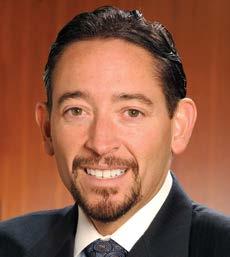
Thaddeus Arroyo is responsible for directing AT&T’s information technology organization, including Internet and Intranet capabilities, developing applications systems across the mobility and home solutions markets, business and network solutions segments, and corporate systems. He also oversees AT&T’s enterprise data centers. Arroyo has advanced AT&T’s information technology transformation strategy in ways that create new value for AT&T’s business, customers, and partners.
Under Arroyo’s leadership, AT&T has been consistently recognized for thought leadership and creativity in information technology innovation and execution. Awards include the Information Week 500 for five consecutive years and the CIO 100 Award in six of the last seven years. AT&T was also recognized by Computerworld as one of the 100 best companies to work for in IT for 2012. Arroyo is an active board member for the National Center for Women and Information Technology and the Hispanic IT Executive Council. He also serves on the SMU Cox School of Business Executive Advisory Board. Arroyo has a bachelor’s degree in mathematics from the University of Texas at Arlington, and a Master’s of Business Administration from Southern Methodist University.
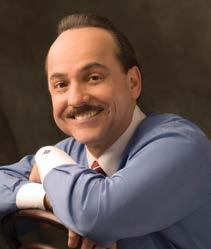
Myrna Soto Chief information and infrastructure officer
Myrna Soto is a leading information security executive with nearly 25 years of focused information technology and security experience and accolades within a variety of industries. Soto is responsible for security strategy and development of informa-
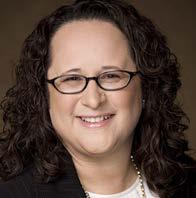
tion and infrastructure security operations and programs for Comcast Corporation. Since taking her post in 2009, Myrna has consolidated no less than five security and compliance teams into a central organization and also led several initiatives that have placed the security organization in a position to be a revenue enabler for the company. Prior to joining Comcast, Soto was the chief information security officer and vice president of IT governance for MGM Resorts International. She has also held executive positions at American Express and Norwegian Cruise Line. She holds a master’s degree in industrial psychology and an MBA. The Hispanic IT Executive Council named Ms. Soto the Member of the Year in 2013.
Ricardo Barta Chief Information Officer for the Americas DHL Global Forwarding, a business unit of DPDHL
Ricardo Barta is a leader in the world’s largest logistics group. Barta is a member of the DHL’s Americas Management Board and he is responsible for leading a multinational Information Technology (IT) team with a transformational management agenda, while reshaping IT capabilities, strategy and maximizing IT value for cost in the region. Carrying out his responsibilities based out of Atlanta, Georgia, he oversees all IT internal and external resources throughout the Americas region.
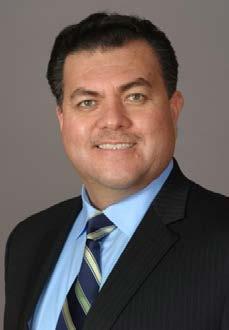
A driven IT executive with a 23-year track record in Fortune 100 global corporations, he joined DHL in January 2012 under his current position, and has held various executive-level positions. Prior to joining DHL, he served as head of global IT strategy and chief architect for GlaxoSmithKline Global Consumer Business. Barta was also CIO regional head of IT Americas for the Royal Philips consumer electronics business division, in addition to being head of regional IT delivery and operations for their semiconductors division. Barta sits on the Executive Board of HITEC (Hispanic IT Executive Council), and has a master’s degree in information systems management from the U.S. Naval Postgraduate School and a bachelor’s degree in systems engineering from the Air Force Academy in Lima, Peru.
Eugenio (Gene) Alvarez
Research Vice President
Gene Alvarez leads research on e-commerce, including topics such as business models, cloud, Software as a Service (SaaS), open source technologies, social commerce, mobile commerce and context-aware computing, product reviews, recommendations and CRM organizational vision and strategy. He is
chairperson for Gartner’s premier Customer 360 Summit and has spoken at many international events. Alvarez has 30 years of business and IT experience in impact assessment, vendor management, project management, software development and delivery of complex business applications.
Ramón Baez
Senior Vice President and Chief Information Officer
Ramón Baez is responsible for HP’s information technology (IT) strategy and all company IT assets that support HP employees and help drive strategic priorities. This includes application development, the company’s private cloud, IT security, data management, technology infrastructure, and telecom networks.

Baez’s career spans more than three decades with Fortune 100 companies in industries including manufacturing, packaged goods, aerospace and defense, and products and services for the scientific community. Prior to HP, Baez was vice president of information technology services and CIO of Kimberly-Clark Corp., where he was responsible for leading the company’s information systems initiatives. Before Kimberly-Clark, Baez served in CIO roles for Thermo Fisher Scientific Inc. and Honeywell’s Automation and Control Solution group. He began his career at Northrop Grumman, where he spent 25 years and finished as CIO for its electronics systems sensor sector. Baez graduated from the University of La Verne in California in 1994, with a bachelor’s degree in business administration.
Vice President, IT and Chief Information Officer
Global Surgery Americas
Johnson & Johnson
Frank De Armas is responsible for all IT activities for the Johnson & Johnson Global Surgery Group and for any franchise related solutions deployed globally. He is also responsible for professional education and R&D centers of excellence, and all medical devices and diagnostics shared services in Canada and Latin America. He also serves on the Global Ethicon Global Management Board. In his previous role, he was responsible for directing application development, process excellence, and management of outsourced development centers and level 2 and 3 support of applications.
Prior to Johnson & Johnson, De Armas spent over 25 years
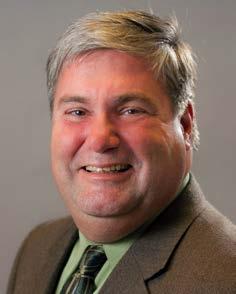
in the banking and financial services industry, most recently with Whitney National Bank as executive vice president and chief information officer of operations and technology. In this role, he was responsible for leading the bank’s back office operations, security/business continuity and technology to include architecture/strategy, delivery / development, infrastructure and operations. De Armas received his BBA from Northwood University and his MBA from California Coast University. He is a co-founder of the Hispanic Information Technology Executive Council (HITEC), where he currently sits on the Board of Directors and is Chairman Emeritus. De Armas is a proud veteran of the U.S. Army, having served eight years.
Darrell Higueros
President and CEO
Darrell Higueros leads technology management and consulting firm, Next Generation. Higueros has served as the co-chair of the Technology Committee of the Illinois Hispanic Chamber of Commerce and is a currently a member of HITEC (Hispanic IT Executive Council), an executive leadership organization of senior business and IT executives who have built outstanding careers in information technology.
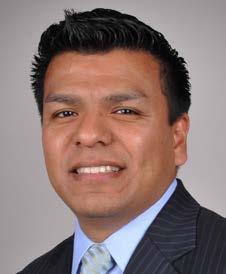
Deborah Aguiar-Vélez Chief Executive Officer
Jorge Titinger President and Chief Executive Officer
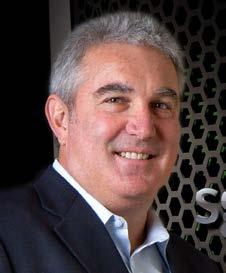
Before his 17-year career in the semiconductor equipment industry, Jorge spent 10 years in the computer industry, where he held positions of increasing responsibility at Hewlett-Packard Company, MIPS Computer Systems, Inc. and Silicon Graphics, Inc. He joined Verigy Ltd., as chief operating officer in June 2008, was promoted to chief executive officer in January 2011 and led the company through a successful sale in late 2011. Jorge joined SGI as president and chief executive officer, as well as a member of its Board of Directors, on February 27, 2012, bringing with him a results-oriented approach and the ability to think strategically, which has helped to extend SGI’s track record of innovation and growth.
Deborah Aguiar-Vélez is an accomplished engineer. She made her mark in the business world in 1983, when she founded Sistemas Corporation. The company provides customized software and training for engineers, scientists and technical personnel. Aguiar-Vélez has spearheaded numerous multimillion-dollar programs and established customer relationships with several highly recognizable customers, including ExxonMobil, BASF, and Xerox. Prior, she thrived as director of New Jersey’s Division of Small Businesses and Women and Minority Businesses from 1988 to 1990, during which time she managed a staff of over 30 and provided top-quality assistance to entrepreneurs while forging public and private sector partnerships. She was appointed to this position by former New Jersey Gov. Thomas Kean, at which time she was the highest-ranked Hispanic in Kean’s administration. In 2009, Aguiar-Vélez started Escúchame Inc., a virtual community of Latina experts and entrepreneurs. Escúchame provides the infrastructure where Latinas share their knowledge, gain visibility, earn paid speaking engagements, and sell their products, books and services. Notably, AguiarVélez has served on the boards for The Franklin Institute in Philadelphia, Pennsylvania. Her most accomplished board experience commenced in 1999 with SBLI USA Mutual Life Insurance Company Inc., a 70-year-old company with nearly $1.5 billion in assets. She is a board member and is the chair of the nominating, governance and human resources committee. Aguiar-Vélez earned her bachelor’s degree in chemical engineering with honors from the University of Puerto Rico.

Rodrigo Paranhos Velloso has been at Google since early 2007 and, having recently assumed the Head of Gaming role at YouTube, is responsible for building partnerships with major video content creators in that space. Previously, he was head of Hispanic and Latin American content for YouTube for two years and head of business development at Google Latin America for four years. Before joining Google, he worked at Brazilian media conglomerate, Grupo Abril, for eight years where, among other roles, he was editor-in-chief the Brazilian edition of Playboy magazine. Rodrigo received his Bachelor of Science in economics from the Wharton School of Business and his Bachelor of Arts in communications from the Annenberg School of Communications, both at the University of Pennsylvania.

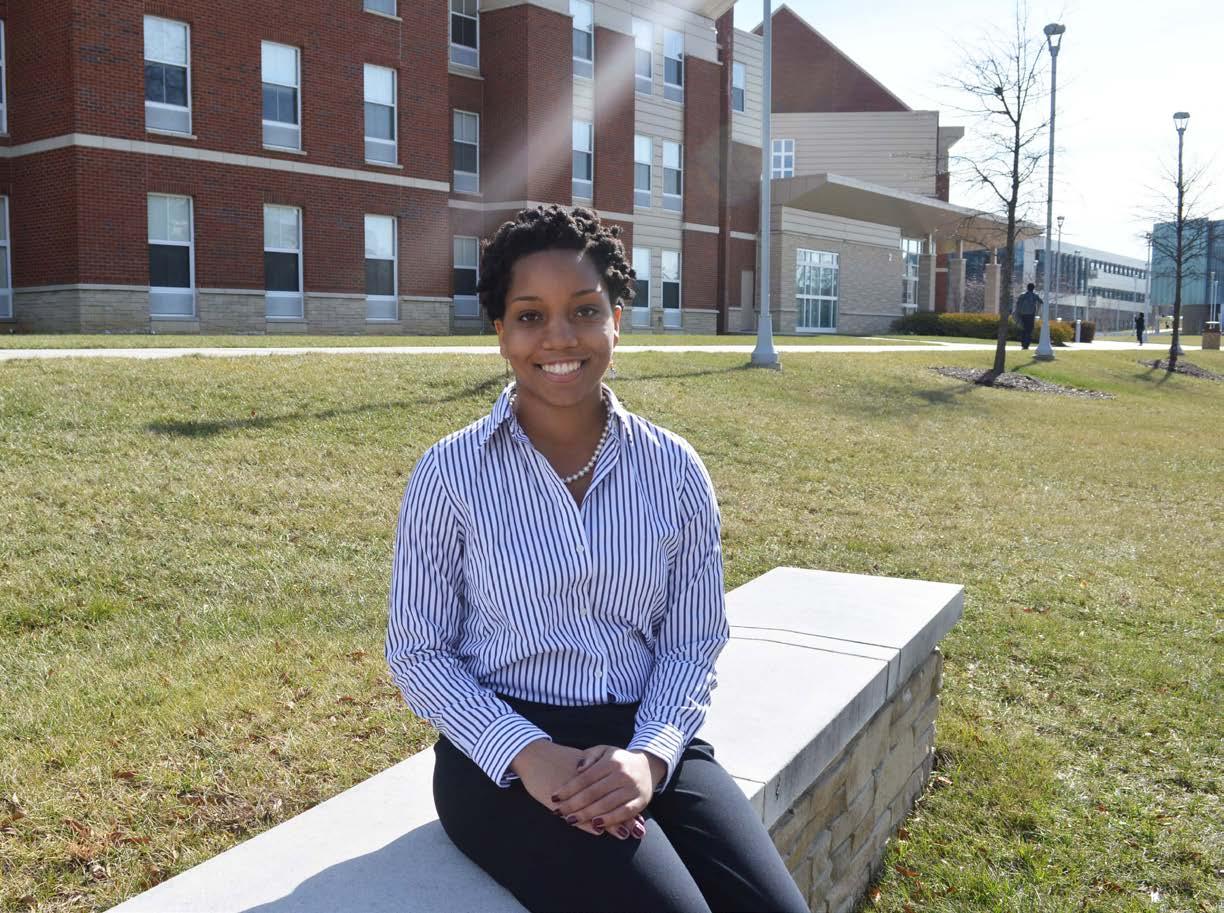
by Gale Horton Gay ghorton@ccgmag.com
Summer is a treasured time for college students. Some want nothing more than to escape the intense workload of higher education. However, others seek experiences that are tough, challenging and bring with them immense rewards that help to better prepare them for their careers. Here are the summer experiences of a select group of ambitious and forward-thinking young people.
Now that Roscoe A. Johnson IV has his undergraduate degree in electrical engineering under his belt, he’s got his sights set on graduate school.
The 22-year-old, who graduated from Morgan State University in May, will spend the summer preparing for that next step— the pursuit of a master’s degree in systems engineering from the University of Southern California.
In the meantime, Johnson will be interning at Johns Hopkins University Applied Physics Laboratory in Maryland working on Python guided user interface for a radar system. The opportunity at Johns Hopkins came about after Johnson visited the career services center in Morgan State University’s Engineering Department.
Johnson, a native of Baltimore and the recipient of a com-
munity award at the Black Engineer of the Year Award conference in February 2014, said he hopes that from his summer experience he will gain better insight into his future and learn the types of projects he most wants to work on professionally. “I also want to learn different programming and leaderships skills,” he said.
Although he is unsure of the exact field he would like to go into, Johnson said he’s leaning toward a career in modeling and simulation for radar systems.
Before Destenie Nock takes off for an international graduate school experience, she’s giving back to the community in a most significant way. The 22-year-old, who received two bachelor degrees in electrical engineering and applied math in May from North Carolina A&T State University, volunteered to tutor
math at an elementary school in Greensboro, North Carolina. Throughout the school year, Nock had volunteered at the school and decided to continue doing so over the summer.
Nock, a native of Calvert County, Maryland, is taking a bit of a break from engineering studies and will be working to earn a master’s degree in leadership and sustainable development in Ireland. After that she plans to re-focus on engineering and secure a doctorate in industrial engineering.
Nock, who was bestowed with an academic award at the Black Engineer of the Year Award conference in February 2014, said that for a career she’s most interested in helping developing nations enhance their power grids and educational programs.
There’s nothing lightweight about the internship Whitney Wilson is doing this summer. The 20-year-old bioengineering major at the University of Maryland, College Park, is working at DuPont as a product stewardship and regulatory intern in the industrial biosciences division.
Wilson, who will be a senior in the fall, is tasked with compiling information and designing a training module on global cosmetic regulations that can potentially be used throughout the division.
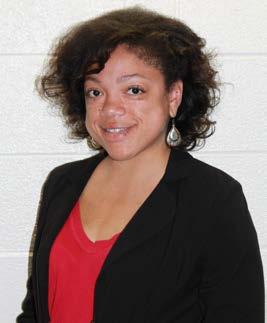
This opportunity, located in Wilmington, Delaware, came about through her school’s Career Center’s Listserv.
Wilson, who received an academic award at the Black Engineer of the Year Award conference in February 2014, hopes to gain experience working in the product stewardship and regulatory area. “I have not had the chance to work in such a large, interdisciplinary, global company,” said Wilson. “I look forward to being able to apply my knowledge in a new way, especially since this is a non-technical position.”
A native of Bear, Delaware, Wilson has a clear vision for her future. “Ultimately I would like to work in STEM education,” she said “I plan to go to graduate school and hopefully get a master’s degree in engineering and public policy. I want to use my knowledge and skill-sets to help with the STEM education of others.”
Ciara Lynton, 19, hasn’t determined her ultimate career goal.
Still that’s not stopping her from diving head first into the engineering field. The junior at Morgan State University in
Baltimore, Maryland, spent this past summer in NASA’s Jet Propulsion Laboratory in Pasadena, California.
Lynton, who was recognized with a research award at the Black Engineer of the Year Award 2014 conference, became eligible for the summer internship after she was admitted into the NASA MUREP scholarship program last September
“I hope to gain a plethora of knowledge about robotics,” said Lynton who worked in NASA’s human-robotics department. “Also, I hope that this opportunity helps me to narrow down my interest in engineering.”
While she ponders her career path, Lynton said she is sure of one thing.
“I would like to make a difference in the world through my electrical engineering background,” she said.
Alex Killam isn’t waiting for his upcoming senior year at college to begin to figure out the direction for his career once he graduates. This summer, the 20-year-old electronic engineering major at Norfolk State University interned at Chrysler in Auburn Hills, Michigan.
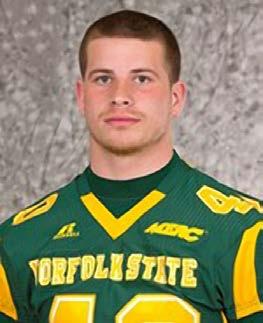
He’s working with the company’s vehicle integration team, testing the 2015 police Dodge Charger primarily, as well as the 2015 police Ram and 2015 police Dodge Durango. “My main responsibility is to prepare the upcoming police units for the police catalog test done by the Michigan State Police Department and the Los Angeles Police Department,” said Killam. “These tasks involve diagnosing and fixing any electrical issues with the car as well as performance issues.”
After receiving a Black Engineer of the Year athletic award and attending the conference’s career fair, Killam met with Chrysler representatives at the fair. He obviously made a positive impression. “I was blessed to receive two internship offers from Chrysler in engineering and manufacturing,” he said. “I accepted the engineering internship shortly thereafter.”
Killam has high expectations of his internship—learning about the company’s working environment, networking and soaking up as much as he can about the automotive industry and how electronic engineering relates.
However the Newport News, Virginia, native admits he’s not completely sure of his future career field.
“I feel as I am still learning so much now that I want to see how I can apply it. I am interested in so many different types of careers it is hard to make a decision now. The only thing that I do know is that I really want to make a difference wherever I go. I want to apply all the knowledge and drive that I contain to help innovate and create a positive impact,” he said.
Joe Carter could have done many different things this past summer. However, she chose to give back.
When Carter was a freshman at North Carolina A&T State University, she was mentored through the school’s Helping Orient Minorities to Engineering (HOME) program. She described the experience as eye-opening and promised herself to one day do the same for others. That day came this summer when Carter put off starting a full-time job to work at North Carolina A&T as a lead mentor in the program.
The goal of the program is to help orient minorities to engineering and foster their personal, professional and academic development. Carter, recipient of a 2014 Black Engineer of the Year leadership award, explained that the five-week program is offered to the top 10 percent of incoming freshman engineers at North Carolina A&T and is designed to facilitate their transition from high school to college.
“The people and activities in this program severely impacted my successful matriculation through A&T,” said Carter, adding that she wanted to be of service to the incoming students. HOME also afforded her “the opportunity to experience a multitude of things while at A&T that I never dreamed of before coming to college.”
Now that summer’s over, the 22-year-old computer science major who graduated in May is rolling up her sleeves for a new chapter in her life—working for Northrop Grumman in Linthicum, Maryland, in the professional development program.
She also plans to pursue a master’s degree in computer science as well as create programs to introduce young people to the STEM field.
Learning about leadership has been at the heart of Nijel Rogers summer experience.
The 21-year-old who will be a senior this fall at the U.S. Military Academy at West Point is majoring in chemical engineering, and spent three weeks at Fort Drum, New York, shadowing a military
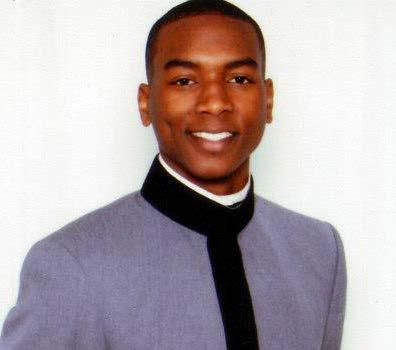
officer in the aviation unit. He also had the opportunity to work not only work with multiple types of helicopters and aircraft technology but also to test his leadership skills by subbing in as a temporary platoon leader and leading a group of 10 soldiers through their daily objective.
He also attended the 100 Black Men of America National Conference held in Fort Lauderdale. He represented West Point and talked to high school and college students about the opportunities at the military academy as well as how the 100 Black Men of Atlanta program helped him develop into the leader he is today.
And for six weeks, he and eight other cadets were the primary leaders of West Point’s mandated cadet field training.
“My mentors pushed me to strive for leadership positions that, while requiring more work than some jobs, best prepare me for service as an officer in the United States Army,” said Rogers, who credits his mentors and the academy for the opportunities. “I enjoy the fact my summer is packed because the benefits of what I gain from my work far outweigh the desire for simply having an easy summer.”
The native of Atlanta, who was recognized with a Black Engineer of the Year military leadership award in 2014, said he hopes that through his summer experiences he learns about his leadership weaknesses and develops into a more efficient leader.
Rogers is quite enthusiastic about his becoming a commissioned officer, serving in the military and continuing to study chemical engineering.
Doing research may not be some people’s idea of a great way to spend one’s summer, but Vladimir Moricette isn’t one of those people.
The 22-year-chemistry major at Kennesaw State University conducted research under the direction of John Salerno, Ph.D., professor of biotechnology at KSU. He worked on the function of control elements in nitric oxide signaling.

The senior is optimistic he’ll be able to get his research published.
Moricette, who was born in New York but reared in Haiti until he was 18, is also working to get into pharmacy school with the goal of being a pharmacist.
He was awarded a Black Engineer of the Year community award in 2014.
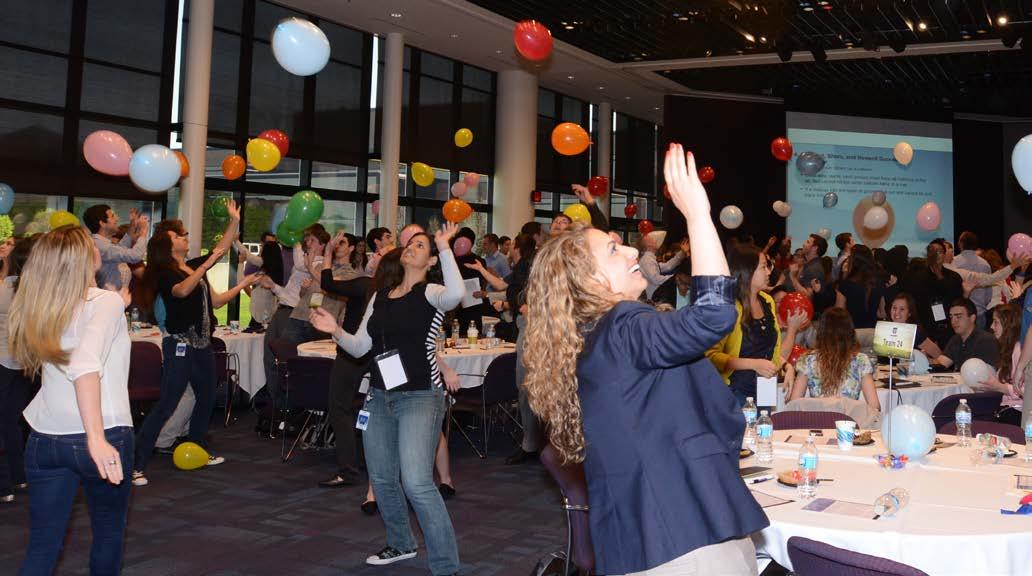
Creating win-win situations for promising STEM careerists and organizations that rely on those careers are some of the reasons for investing in summer internships.
Jenny Tieu, education office program coordinator with the Jet Propulsion Laboratory (JPL) in Pasadena, California, said her organization supports internships because they provide students with invaluable experience to train alongside world-renowned scientists and engineers, with the goal of motivating and inspiring students to complete their STEM degrees and pursue related careers.
“We are providing a great opportunity and view this as a win-win: students work alongside scientists and engineers, at the same time, the lab attracts students who are passionate and talented about space exploration. We really are excited to inspire new generations to come into the STEM field,” Tieu said.
JPL is a federally funded research and development facility managed by the California Institute of Technology for the National Aeronautic and Space Administration (NASA). The tools JPL has developed for space exploration also have proved invaluable in providing new insights and discoveries in studies of Earth, its atmosphere, climate, oceans, geology and the biosphere.
JPL, which has had internship programs for more than 30 years, hires more than 600 students for 10-week paid internships during the summer and about 800 internships throughout the year.
Tieu said her organization’s internships provide research experience in the various areas and opportunities include designing, developing and testing robotic-related missions.
Benefits to the laboratory include the enthusiasm the students bring as well as their contributions to the lab’s research. Student interns are co-authors on 10 percent of all JPL peer-reviewed publications.
For many interns, there’s an added benefit—employment. Tieu said JPL hires about 12 percent of graduates who are eligible for employment and other NASA Centers hire another 7 percent of eligible interns.
For those interns fortunate enough to be hired by JPL following completion of their education, Tieu said they start with a base of experience, network of connections and familiarity with the JPL campus and culture. She said all these elements are the foundation of a successful career.
Intern satisfaction with the program is high with 99 percent reporting via surveys that they would recommend
the program to others, said Tieu.
She added that in addition to a grade point average of 3.0 or higher, strong computer skills and the pursuit of a STEM degree, JPL seeks prospective interns who have a willingness to learn and excel and have a passion for space exploration. Additionally, students that show initiative and are involved in extracurricular activities are prime recruits. For the students who are close to graduating, the organization also looks for prospects with research knowledge.
For its summer 2014 internship program, Chrysler recruited 502 students from 127 universities—the most in the program’s 19-year history. The interns worked across all company operations and locations.
“We think it’s imperative to provide these young people with internship opportunities; it gives Chrysler Group the opportunity to find and harvest young talent,” said Alex Shesterkin, communications manager at Chrysler. “It’s almost comparable to a long interview, in the sense that it allows Chrysler to take a look at the skills and ideas the interns can offer, ultimately preparing them for what could possibly lead to full-time employment. Moreover, it gives the interns an opportunity to find out what it’s like to work in the industry, collaborate as a team and get a sense of what they like or don’t like.”
Interns are hired in almost every department from engineering to marketing, and an official said they are usually assigned specific projects and given “a great deal of responsibility.”
Since 2009, Chrysler has hired 199 students from its intern program. In the 2013 intern class, 235 students graduated from college, half received Chrysler job offers and 83 accepted them.
“We hope they get a valuable work experience that gives them the opportunity to learn about themselves, their skillset and what it’s like to work in Chrysler Group’s culture,” said Shesterkin. “We also hope it gives the out-of-state interns a feel of what it’s like to work in Michigan and the benefits of living in this part of the country.”
She added that the benefits to the automaker are “endless” with the interns bringing a fresh perspective.
“Interns can see the company through a new lens that enables them to contribute innovative ideas and propose unique solutions to problems or issues. Interns also bring a great energy to Chrysler Group’s culture,” Shesterkin said. “From an employee’s perspective, it gives you a renewed appreciation for the culture when you can see that your company is open to embracing their internship program and taking each intern’s views or ideas very seriously.”


by Lango Deen ldeen@ccgmag.com
If businesses are built one customer at a time, then so are careers—one job (or internship) at a time. That approach helped Pablo A. Vegas become one of the many success stories for internships and cooperative education. Over five undergraduate years in the University of Michigan (UM) College of Engineering, he did internships at an automaker, a high-tech company, an aviation firm, and a fire equipment maker.
Currently, UM makes over 700 co-ops and internships available to thousands of students at more than 200 employer sites across America.
“Internships are not just a three-month, four-month stop onto the next real job, but rather a significant building block that can be utilized down the road with people you meet and experiences you’ll have,” said Vegas, who was appointed president and chief operating officer for American Electric Power (AEP) Ohio in 2012. Vegas keeps the lights on for 1.5 million customers in Ohio—with responsibility for distribution operations, safety and a range of customer and regulatory relationships.
As an entering mechanical engineering freshman, Vegas signed up for the Engineering Cooperative Education Program. By the end of his sophomore year, he had worked with a co-op coordinator in the school to assess his interests. According to UM’s website, the coordinator, who is aware of the needs and preferences of employers, refers students to a co-op employer who matches interests. Through a personal interview, usually held at the company, students and the employer make decisions about a job offer and acceptance of an offer.
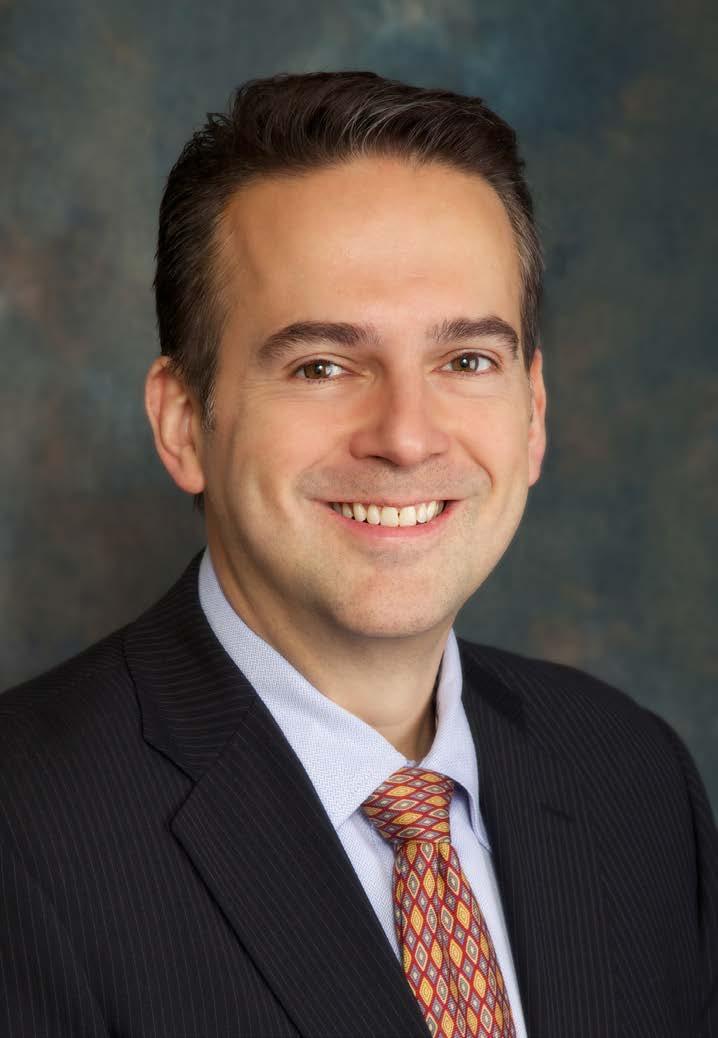
Vegas began his first co-op under the supervision of practicing engineers at a glass plant in Dearborn, Michigan. He spent a semester doing quality testing. Vega’s second placement took him more than 700 miles south to North Carolina, testing communications equipment. He did so well, the com-
pany asked him back. Next was a position at Scott Aviation, in Lancaster, New York, which made respiratory products and systems for the aerospace industry. Vegas did inventory management of air packs used by firemen and in commercial aviation oxygen systems. In his senior year, he filled a slot at a fire truck company in West Virginia.
“Both of those were in consulting teams doing similar logistical improvement projects,” he explained. “It was in those two that I grew to love the travel and lifestyle of consulting, and the dynamic nature of the kind of work the consultants were doing.”
Vegas also learned, over the span of his five internships, just what he wanted to do and what he didn’t want. He also found that he was more attracted to technology/inventory management and business consulting than core, traditional engineering focused on quality testing. He learned, too, the type of career opportunities he was interested in pursuing after graduation.
“One of the co-op assignments was with a firm in Cleveland that assigned me to a project run with support from one of the big consulting firms, Andersen Consulting (now known as Accenture). Over the course of two separate co-op assignments, I worked with this firm and their consulting teams on different business projects that combined IT system and business process changes. The dynamic nature of this work, the travel, and the challenge of applying technology to help solve business problems was fascinating to me and it led to my decision to work in the consulting industry when I graduated.”
As a new Andersen Consulting hire, and over the course of two years, Vegas did consulting for MCI, one of the largest longdistance phone companies at the time. He worked on billing systems development and computer programming. One of his most memorable projects was in the wireless division of MCI.
“This was back in the late ‘90s when cell phones were starting to take off and marketing of these cell phone companies was getting creative. They’d give you, say, the first minute free on a phone call, free minutes if you called at a certain time of day, lower costs within your local area than if you were roaming.”
Vegas remembers working on coding and development of billing systems for all those capabilities at MCI Wireless.
“I turned down higher-paying job offers to work in a location I felt I would be happier living in. At that time I didn’t have a family of my own yet, and I valued quality of life over a bigger paycheck. Later in my career, after having a family, my priorities changed and I made a significant career decision to leave consulting and move into the utility industry in order to limit the amount of travel I was doing that was taking me away from my family every week. Spending more time with my wife and children was an important priority and AEP offered me an opportunity where I could do that.”
Since joining AEP in 2005, Vegas has held leadership positions in operations, information technology and finance. Previously he was vice president and chief information officer for American
Electric Power, responsible for development and support of AEP’s software applications and operation of AEP’s information technology infrastructure. From 2008 to 2010, he was president and chief operating officer for AEP Texas, overseeing distribution operations serving nearly one million electricity consumers in south and west Texas as well as the operating unit’s safety, customer services, marketing, communications, community affairs, governmental affairs, and regulatory functions.
Prior, Vegas served as director of strategic planning, working cross-functionally to formulate AEP’s short- and long-term stra-
“Integrating renewable and distributed energy sources, reliability expectations in the face of extreme weather events, and an impending shift in electric generation fuels is going to drive dramatic change in our company and industry. So, I need to focus on developing change leadership skills across all disciplines at AEP.”
—Pablo Vegas
tegic plans. Before joining AEP, Vegas held senior leadership positions with IBM, PricewaterhouseCoopers and Andersen Consulting. In his last position with IBM, as associate partner, communications sector, Vegas had responsibility for delivering process and technology solutions within the energy sector.
As a leader in the electric industry, Vegas said he needs to make sure that his organization is positioned to flex and change as the electric economy changes.
“Integrating renewable and distributed energy sources, reliability expectations in the face of extreme weather events, and an impending shift in electric generation fuels is going to drive dramatic change in our company and industry. So, I need to focus on developing change leadership skills across all disciplines at AEP. This includes a focus on the culture of our organization,
the agility of our organization to adapt to change, and clarity of vision and strategy throughout the organization.”
Asked about his leadership style, he said two books have had a significant impact on the way he thinks about leadership and management. The first is Winning by Jack Welch.
“That book helped me understand the importance of communicating clearly regarding business strategies and how critical human resource management is in the role of a leader. The second is Pleased but Not Satisfied by David Sokol. This book reminds us to always be critical in how we look at our business and that conservative and disciplined management practices may not be flashy, but will deliver high performance results consistently.”
Vegas adds 5 rules of his own:
1. Always know what the big rocks are in your life and at work.
“There was an activity at a church camp I attended that had us fill a jar with a series of small, medium and large rocks, with the goal being to fit as many as possible in the jar. Then the rocks were equated to items of importance in our life (the large rocks being the most important) and the jar was the amount of time we had in our life. The activity shows that if you don’t put the large rocks in first, they will not fit after you put in the small ones. So if you fill your day with less important activities, you will miss out on the most important things in your life.”
2. Never delegate accountability.
“This does not mean do not delegate, but focus on accountability and ownership. Regardless of whether you are a manager or individual contributor, take ownership in your work and see it through to completion.”
3. Lead by example–always be willing to do yourself what you ask of others.
4. Surround yourself with people that are better than you and/or want your job.
“A network of ambitious and successful people can be one of your most valuable work assets. And remember, you can’t go anywhere in your career if you’re irreplaceable. Help grow and develop people and you will also help your career development as well.”
5. Say thank you often, publicly and genuinely.
“Gratitude and appreciation are at the top of the mood elevator and when our thinking and attitude is in an appreciative state, we are at our best.”
Vegas currently serves as the chairman on the board of trustees for the Center of Science and Industry in Columbus, Ohio. He is a director on the boards of the United Way of Central Ohio, the Ohio Chamber of Commerce and the economic development organization for central Ohio, Columbus 2020. He also serves on the advisory boards for the Ohio State University College of Engineering and the Ohio University Voinovich School of Leadership. Vegas attended the AEP Strategic Leadership program at The Ohio State University and graduated cum laude from the University of Michigan with a Bachelor of Science in mechanical engineering.
Vegas has three pieces of advice for students in a co-op or internship
1. Take the opportunity to learn as much as possible about the organization beyond just the area that you are assigned.
2. Ask a lot of questions. People do not expect you to know everything, you are there to learn.
3. It is equally important to learn what you do NOT want to do with your career as it is to learn what you DO want to do in your career.
It integrates so many important functions for me—the phone of course, my calendar, email, news, traffic information, weather forecasts, sports updates, social media, etc. When I travel, I Facetime with my family and can see them and talk to them at the same time. I can also unwind with it and play a game of Bejeweled or Tetris, two of my favorites.

It aggregates and summarizes news stories and information about the energy industry in a very consumable way. It also has a good corresponding iPhone app that makes it easy to get the information on the smaller iPhone screen.

by Imani Carter icarter@ccgmag.com
Over the years, there has been a growing population of student veterans on college campuses. Studies show that in 2009 there were 500,000 student veterans receiving education benefits. By 2013, over 1 million student veterans were using GI benefits to pursue advanced educational opportunities.
Currently, there are at least 79.2 percent of student veterans enrolled in public institutions, majority studying business, public service, health science and engineering. In total, 51.7 percent of these veterans complete their degree/certificate within four to five years, similar to the average student.
The success of many student veteran programs can be attributed to Student Veterans of America (SVA). Founded in 2008, SVA has been committed to serving military veterans who have returned home seeking higher education. SVA strives to fulfill this mission by creating numerous programs and services for veterans, facilitating over 950 student veteran led chapter affiliates and connecting with private and nonprofit partners.
USBE&IT magazine was able to discuss SVA’s mission and learn more about the organization as well as the importance of assisting Student Veterans with Student Veterans of America President and CEO, D. Wayne Robinson.
D. Wayne Robinson served in the U.S. Army and rose to the pinnacle of enlisted ranks as a command sergeant major. During his career he held many leadership positions in artillery, special operations, and recruiting and graduated from every enlisted leadership course offered by the Army. Robinson is a graduate of the University of Chicago’s Booth School.
HE&IT: What is the mission of Student Veterans of America?
Robinson: Our mission at SVA is to provide military veterans with the resources, support, and advocacy needed to succeed in higher education and following graduation.
HE&IT : How do Student Veterans’ needs differ from other veterans?
Robinson: Student Veterans are unique in that they are the quintessential nontraditional students, and often face a variety of challenges that most of their peers in the classroom do not; they are generally older, more likely to have families, and often have significant financial responsibilities not shared by most 18 to 22 year olds. However, unlike other nontraditional students, many veterans deal with the added challenge of juggling academics with their transition to higher education. In some cases, temporary withdrawals from school to deploy or train are the norm for many National Guardsmen or Reservists, which often elongates their path to completion or it can put it on hold altogether.
HE&IT: Why do you believe it is important to support student veterans?
Robinson: I believe it is critical that we empower student veterans with the resources to succeed because they represent America’s smartest investment. These individuals are trained at rigorous standards in some of the most challenging conditions when they’re serving in our country’s defense. The leadership they then bring to the classroom when taking advantage of another great investment—the GI Bill—allows them to excel when they return to the civilian population.
HE&IT: In what ways have you personally seen SVA benefit students?
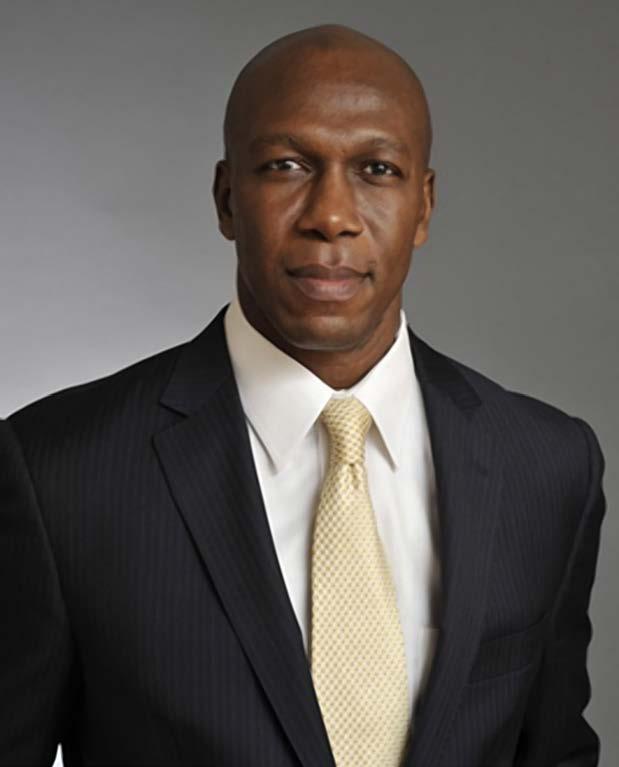
Robinson: I’ve seen Student Veterans benefit from the vast network established by SVA. With over 1,000 chapters across the country, they have the opportunity to connect with their peers in multiple ways. This ability to network with peers and employers makes the transition to the campus, then on to a career, a much smoother path.
HE&IT: What type of networking opportunities has SVA provided to support its chapters?
Robinson: SVA provides its chapters with opportunities to attend an annual leadership institute where they learn how to develop a strong business case for their own chapter alongside peers from across the country. We also have regional leadership summits, which have a similar program as the institute open to a wider audience of individuals. The most anticipated event each year is our national conference, which began with the organization’s inception in 2008. The “NatCon” is our annual summoning of student veterans everywhere, and always a good opportunity to meet others.
HE&IT: What other organizations and corporations has SVA partnered with?
Robinson: We have many strong partners, which contribute to our organization’s value and reach for student veterans. Some partnerships of note include: Google, Raytheon, the Lumina
Bob Woodruff Foundation, the U.S. Chamber of Commerce, and the Department of Veterans Affairs.
HE&IT: What makes you most proud of this organization?
Robinson: I’m proud of the fact that every day we get to come to work and fight for veterans who have chosen higher education as their next step after service. Though I get to see the impact for many students I meet on campuses, I am most proud of the path that we’re paving for the millions of student veterans to come.
HE&IT: Where would you like to see your organizations in the next 5-10 years?
Robinson: Over the coming years, SVA will continue to rise on the veteran’s scene, and will also be known as an expert in the higher education space. Issues that impact all students often take center stage when student veterans speak out about them. We will transform the paths and opportunities for all non-traditional students in a variety of fields including those who wish to pursue careers in fields like science, technology, engineering, and math.
For more information on Student Veterans of America, visit www.studentveterans.org

www.southerncompany.com/careers

JOB HORIZON
LANDING A JOB IN ENERGY
ENERGY RISING STARS
Oby Dr. Tyrone Taborn publisher@ccgmag.com
ne of the brightest spots on the job horizon is the energy sector, but less than 1.5 percent of African Americans in four-year colleges are getting degrees associated with the energy industry. While employment for minorities suffered during the economic downturn, job opportunities have been rapidly growing in all areas in energy. Unfortunately, they have failed to maximize on the opportunities.
What has accounted for the uptick in the energy industry is that the United States is a leader in production and supply, and one of the world’s largest energy consumers. The energy industry is the third largest in the United States. U.S. energy companies produce oil, natural gas, coal, nuclear power, renewable energy and fuels, as well as electricity, smart grid, and demand response technologies.
Growing consumer demand and world class innovation—combined with a competitive workforce and supply chain capable of building, installing, and servicing energy technologies—make the United States the world’s most attractive market in the $6 trillion global energy market.

Renewable Energy: The United States is home to a thriving renewable energy industry, with globally competitive firms in all subsectors, including the wind, solar, geothermal, hydropower, biomass, and biofuels sectors. Bloomberg New Energy Finance (BNEF) expects that by 2030 the share of renewables in the U.S. power generation mix to reach 27 percent.
In fact, by then, the United States is projected to have 343 gigawatts (GW) of renewable energy capacity—an increase of 420 percent from 2010 totals. To achieve these gains, BNEF projects that just under $700 billion will be invested in the U.S. renewable energy sector during the next two decades with investment opportunities cascading across the industry’s deep and multi-faceted supply chain.
Today, the United States produces more geothermal energy than any other country (3,187 megawatt (MW); more biomass power than any other country (16,250 MW); enjoys the second-largest wind industry (60,078 MW); third-largest hydropower industry (100,000 MW); and the fifth-largest solar industry (9,370 MW).
Renewable Fuels: With access to abundant natural resources, the industrial wood pellet and ethanol industries are also increasing capacity—particularly to serve overseas markets.
According to the U.S. Industrial Pellet Association, the United States helps meet the world’s demand for renewable, carbon beneficial wood pellets through a strong and growing forestscape that is protected by rigorous federal and state laws, contractual obligations, independent sustainability certifications and third party audits. U.S. wood pellet manufacturers can now produce more than 16 billion metric tons of pellets annually. Much of the production has been added in recent years to export to Europe. In 2012, nearly 1.9 million metric tons were exported, and in 2013 exporters were on track to exceed the previous year’s levels.
America’s ethanol industry is the largest and most efficient in the world, incorporating technological innovations to produce over 13 billion gallons of ethanol annually. In addition, the industry is expanding to new markets. During 2012, the U.S. ethanol industry exported an estimated 700-750 million gallons of ethanol—around 6 percent of its total production—to markets around the world. Investment opportunities also exist for the development of advanced biofuels utilizing new technologies and feedstock, particularly in the aviation sector.
Oil and Gas: The United States is undergoing a revolution in oil and natural gas production. American companies have developed techniques for extracting hydrocarbons from shale,
altering the U.S. oil and gas sector and domestic energy landscape. Increased oil and gas production from North Dakota’s Bakken shale and the Marcellus shale in the northeastern region of the United States among other shale plays have been the source of increased onshore oil and gas production.
In addition to shale, the U.S. Gulf of Mexico and Alaska are once again the focus for new investment. The U.S. Department of Interior has released a five-year leasing program for high-resource areas under the Outer Continental Shelf Oil and Gas Leasing: 2012-2017 Program. In light of these developments, the International Energy Agency recently projected the United States will surpass Russia and Saudi Arabia as the world’s top oil producer by 2015, and be close to energy self-sufficiency in the next two decades, amid booming output from shale formations.
Coal: The United States holds the world’s largest estimated recoverable reserves of coal and is a net exporter of coal. Approximately 72 percent of coal production originated in five states: Wyoming, West Virginia, Kentucky, Pennsylvania, and Texas. Coal is used to generate 42 percent of the electricity in the United States, and is also used for industrial applications such as cement making, and conversion to coke for the smelting of iron ore at blast furnaces to make steel. The United States is also developing carbon capture and sequestration technologies with the goal of capturing 90 percent of CO2 emissions from coal.
Nuclear Energy: The United States operates the most nuclear reactors, has the largest installed nuclear power capacity, and generates the most nuclear power in the world. Nearly 20 percent of U.S. electricity is produced at 100 nuclear reactors in 31 states. By 2015, the first of 24 new nuclear reactors are expected to come on line.
Subsectors of the civil nuclear industry are represented by companies that produce nuclear components (reactors, nuclear monitoring instruments, boilers, heat exchangers, industrial valves, instrument modules, insulation, economizers for boilers, pumps and other reactor parts), nuclear fuel (uranium mining, conversion, enrichment, fuel assembly fabrication, and spent fuel storage), nuclear engineering and construction (site preparation,
materials and equipment procurement, and construction), and nuclear advisory services (consulting on nuclear-related regulatory policies, human resources, and infrastructure; legal services; and operations and program management services).
According to Oil Price, the U.S. Department of Commerce estimates the international marketplace for civil nuclear technology at $500 to $740 billion over the next 10 years, with the potential to generate more than $100 billion in U.S. exports and thousands of new jobs. The international civil nuclear marketplace is estimated at more than $500‐740 billion during the next decade and has the potential to generate more than $100 billion in U.S. exports and thousands of new skilled and unskilled jobs.
Energy Efficiency: The market for achieving greater energy efficiency in the United States is large and growing. Combined financing and investment in building, industrial, and supply side energy efficiency doubled in 2012, exceeding $15 billion in funds.
The U.S. Energy Information Administration (EIA), which collects, analyzes, and disseminates energy information to promote policy, markets, and public understanding of energy and its interaction with the economy and the environment, says federal appliance standards, along with other federal and state policies, and market forces are drivers of energy efficiency in the United States.
In August 2012, President Obama signed an executive order supporting industrial energy efficiency and combined heat and power. The executive order is expected to encourage industrial facilities to modernize their domestic manufacturing capacity, and contribute to significant energy cost savings by as much as $100 billion.
Smart Grid: The United States is an international leader in the development and deployment of smart grid technologies and services. The smart grid subsector is defined by the electric grid equipment and services required for the modernization of distribution and transmission systems, as well as the Information and Communication Technologies (ICT) that support a fully networked grid and enable two-way communications and electric flows.

Since 2009, investment in modernization of America’s electricity infrastructure has increased dramatically, in large part due to the nearly $8 billion in 99 public-private Smart Grid Investment Grant (SGIG) projects involving more than 200 utilities. These projects have helped push the deployment of smart meters to approximately 37 percent of the country’s 144.51 million electricity consumers.
In addition to public-private programs like the SGIG, America’s shareholder-owned utilities are projected to spend $54.6 billion on transmission infrastructure from 2012 to 2015, a 32-percent increase over the previous four-year period. Overall grid modernization investments are projected to achieve $130 billion in annual benefits for the U.S. economy by 2019, and the smart grid deployment by utilities in the United States is expected to create $15 billion to $31 billion annually by 2014 in potential sales for the ICT industry.
Tby Dr. Tyrone Taborn publisher@ccgmag.com
he United States is the world’s leading producer of natural gas, and the nation has a nearly 100-year supply of it. President Barack Obama has directed his administration to safely develop this gas, called shale gas, in a way that will create up to 600,000 jobs by the end of the decade, according to independent experts. The president also called for new rules requiring companies to disclose the chemicals they use when accessing and removing shale gas on public lands to make sure public health is protected.
Increasing diverse participation in the energy sector is a major challenge for the energy sector. Currently minorities continue to lag in almost all significant areas. The potential for AfricanAmerican success in the energy sector is huge, according to the American Petroleum Institute. In a recently released report, the organization says by 2020, it projects that 500,000 jobs will be created in the upstream oil and natural gas sector alone.
With the constant discovery of new energy, drilling resources and technology, and a push for the United States to become energy independent by 2030, the demand is high for more workers in the industry.
“Shale gas and oil and unconventional resources are a big part of why that’s going to happen,” said Talia Buford, an energy reporter for Politico Pro, who moderated a discussion on shale.
A newer energy discovery, shale is a finegrained sedimentary rock formed by consolidated clay or mud. According to the United States Chamber, by 2020, shale energy “could support three million American jobs and $417 billion in economic growth.”
“Job security ranks No. 1 in driving employment decisions for African Americans and Latinos,” said Rayola Dougher, senior economist at the American Petroleum Institute. “Between 2010 and 2020, about one third of the jobs in the oil industry would go to Hispanics and African-Americans.”

ries start at $60,000; $70,000; or $80,000, possible for a high school graduate.
Her company’s report says that because the industry represents longevity, financial stability and produces products that are viewed as necessities, these are key drivers to the sector, “even more so than salary considerations.”
The energy sector provides opportunities to branch off into several different paths, Dougher said, including corporate, construction, drilling, chemical, steel, hospitality and trucking. Carlos Rodriguez of the American Institute for Research noted that because of such high demand, many entry-level job sala-
Industry insiders say that introducing kids to different careers in primary schools and educating communities about the industry in general plays a huge part in making sure African Americans know about the variety of jobs available in the energy sector.
“There’s no substitute for ambassadors for the industry,” said Frank Stewart, former president of the American Association of Blacks in Energy and current managing partner of FM Stewart Consulting.

Is there a higher calling? A more compelling ambition? The Nuclear Regulatory Commission is powered by people whose mission is focused on just that—protecting people and the environment. Add your skill, professional experience, and passion to our cause.
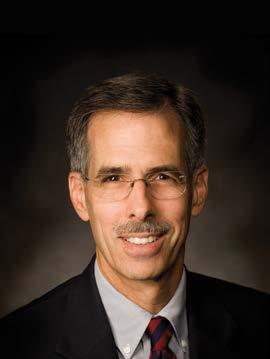






by Frank McCoy fmccoy@ccgmag.com
These private and public companies plus the U.S. Department of Energy, seek STEM students and recent graduates like yourselves to replace retiring Baby Boomers, and to use your vitality, creativity, and 21st Century savvy to transform the booming Energy sector.
Look below to find out the who, what, where, and how of each organization and explore their career, internship, co-op, recruiting, and job posting pages.
Alliant Energy Corporation
4902 North Biltmore Lane, Suite 1000 Madison, WI 53718 202-347-8132
Alliant Energy Corporation (AEP), publicly-traded on the New York Stock Exchange, provides electric and natural gas services to customers and communities in Iowa, Wisconsin, and Minnesota. To learn more about a career at Alliant Energy go to: http://www.alliantenergy. com/Careers/InternshipProgram/. The utility has an internship program and advises all interested to create a job agent on Alliant Energy’s Career page. The AEP website reports that Patricia L. Kampling, Chairman, President and CEO of
Alliant Energy, is committed to diversity in hiring and in supplier contracting.
American Electric Power
1 Riverside Plaza Columbus, OH, USA 43215-2372 614-716-1000
American Electric Power (AEP), serves more than 5 million customers in 11 states, is one of the largest electric utilities, and has the nation’s largest network—more than 40,000-miles of electricity transmission. Interested in a career at AEP go to: https://www.aep. com/careers/. Check out the company’s
diversity policy: https://www.aep.com/ careers/diversity, and read about its paying internships as well: https://www. aep.com/careers/collegerelations/, and particularly the Frequently asked questions: https://www.aep.com/careers/collegerelations/faqs.aspx.
American Petroleum Institute (API)
1220 L Street, NW Washington, DC 20005-4070
Phone 202-682-8000
The American Petroleum Institute, a national trade association represents every facet of the oil and natural gas industry.
Those sectors comprise 8 percent of the U.S. economy and employ which more than 9.8 million people.
Anadarko Petroleum Company
Corporate Office - Allison Tower
1201 Lake Robbins Drive
The Woodlands, Texas 77380
832-636-1000

The Anadarko Petroleum Company, with at least 2.79 billion barrels of oil equivalent of proved reserves at year-end 2013, is ranked as one of the world’s largest independent oil and natural gas exploration and production companies. To review Anadarko Petroleum job and career opportunities go to http://www. anadarko.com/careers/pages/overview. aspx. Anadarko looks for interns and potential hires on college campuses each fall in areas including Accounting, Engineering, Environment, Health & Safety, Geosciences, and Information Technology.
2000 Post Oak Boulevard, Suite 100 Houston, Texas 77056-4400
713-296-6000
The Apache Corporation, founded in 1954, is one of the world’s top independent Exploration & Production companies in the oil and gas industry. In 2011, Apache became an early leader in posting the composition of its frac fluids at FracFocus.org, a joint venture of the Ground Water Protection Council and the Interstate Oil and Gas Compact Commission.” Apache was one of the early proponents of transparency in hydraulic fracturing operations when it posted the composition of its frac fluids at FracFocus.org. Internships are available in areas including Engineering, Geologic Engineering, Drilling, and Geosciences http://www.apachecorp.com/ Careers/United_States/College_recruiting/Interns/index.aspx. Go here, http:// www.apachecorp.com/Careers/United_ States/College_recruiting/index.aspx, for the campus recruiting schedule.
Global Headquarters
2929 Allen Parkway, Suite 2100 Houston, Texas 77019-2118
713-439-8600
Baker Hughes is an oilfield company that provides application-specific products and services to oil and gas operators with petroleum reservoirs. Baker Hughes has more than 60,000 employees in over 80 countries. STEM grads should go to http://public.bakerhughes.com/graduate/graduate-program for information about Field Engineering, Supply Chain, Technology, and Commercial opportunities. Undergrads, studying engineering or engineering-related subjects, geology or geosciences, chemistry, physics, mathematics, supply chain or logistics, and business majors that are seeking internships should visit http://public. bakerhughes.com/graduate/internshipprogram. Also check out the Baker Hughes Opportunities in the Oil and Gas Industry Brochure: http://public. bakerhughes.com/graduate/brochures/ BH_INTERNScard_2013.pdf .
113 West Monument Street Baltimore, Maryland 21201
410-962-1188 x35
E-mail: info@bithenergy.com
BITHENERGY, Inc. is a Baltimore-based energy engineering and technical services consulting firm. Its clients include public, corporate, and residential clients, and BithEnergy has service expertise in energy consumption, smart grid infrastructure construction, and developing renewable energy systems. BithEnergy Founder Robert L. Wallace also founded BITHGROUP Technologies, Inc., and EntreTeach Learning Systems, LLC. BithEnergy projects include design and installation of a 10 MW solar pv facility, and tracking and monitoring the energy usage of 15,000 utility accounts at 1,500 Maryland state agencies , and installation of electric vehicle charging stations at Under Armour.
BP
BP U.S. Communications
501 Westlake Park Blvd.
Houston, TX 77079 - 2604
281 366 2000

BP, a global producer of oil and gas, has about 84,000 worldwide employees. BP’s two main operating areas are Upstream, which finds, develops, and produces sources energy and Downstream, which develops those sources into products that customers purchase. U.S. students and graduates should visit Careers: http://www.bp.com/en/global/ corporate/careers/students-and-graduates/graduate-locations/united-statesstudents-and-graduates.html where you can find out what BP does, apply for jobs, and track your application. There is also link to upcoming events. To learn about internships and co-op opportunities in the areas of engineering, science, business and trading, go to: http://www. bp.com/en/global/corporate/careers/ students-and-graduates/graduate-locations/united-states-students-and-graduates/interns.html. Also try out the BP degree matcher: http://www.bp.com/ en/global/corporate/careers/studentsand-graduates/graduate-locations/ united-states-students-and-graduates/ degree-matcher.html
6001 Bollinger Canyon Rd. San Ramon, CA 94583 925-842-1000
Chevron is a leading global integrated energy company. Among other functions, it explores for, produces and transports crude oil and natural gas; refines, markets, and distributes transportation fuels and lubricants; manufactures and sells petrochemical products; generates power and produces geothermal energy; and provides renewable energy and energy-efficiency solutions. Students and recent graduates will find information on campus visits, internships, and working at Chevron here: http://careers.chevron.com/students/default.aspx. Go to Chevrons’s undergraduate development programs, http://careers.chevron.com/ students/undergraduate_programs/
default.aspx, and its Downstream & Chemicals Engineering Development Programs: http://careers.chevron.com/ disciplines/index_of_disciplines/engineering_development_program/default. aspx, to see who Chevron hires, what you will do, and where you’ll work.
Con Edison of New York Recruitment Section Manager
4 Irving Place, 15 Floor South New York, New York 10003
212-460-4600
RequestForAccomodation@coned.com
Con Edison of New York provides electric service to about 3.3 million customers and gas service to about 1.1 million customers in New York City and Westchester County. ConEd list more than 50 different different job categories on its website: http://apps.coned. com/careers/careers/jobs.asp. There is also information useful to students aspiring to be Co-Op Interns, http:// apps.coned.com/careers/careers/list. asp?category=CO-OP+Interns. Students with a background, or major, in engineering, finance, and information technology, and skilled trades are always welcome.
600 North Dairy Ashford (77079-1175) P.O. Box 2197 Houston, TX 77252-2197 281-293-1000
ConocoPhillips is the world’s largest independent exploration and production company based upon production and proven reserves. ConocoPhillips earned $62 billion in revenue, has operations and activities in 27 countries, $120 billion in total assets, and about 18,800. Careers can be found on http://careers. conocophillips.com/en/ and university recruitment information at http://careers.conocophillips.com/en/universityrecruitment. On the same page, there is information on University Job Search, University New Hire, the University Hiring Process, Scholarships, and an FAQ on campus visits and meeting ConocoPhillips University Recruiting Team.
145 Navarro St.
San Antonio, TX 78205-2934
800-773-3077
CPS Energy is the nation’s largest municipally-owned energy utility to provide both natural gas and electric service. CPS has more than 741,000 electric customers and 331,000 natural gas customers in and around the nation’s seventh-largest city in a 1,514-squaremile service area. Learn about corporate careers, http://www.cpsenergy.com/ About_CPS_Energy/Careers/, and search open positions http://www.cpsenergy. com/About_CPS_Energy/Careers/External/. CPS has a variety of intriguing internships, http://www.cpsenergy.com/ About_CPS_Energy/Careers/Internships. asp.
DPL Inc.
P.O. Box 1247
Dayton, Ohio 45401-1247
800-253-5801
Dayton Power & Light has more than 500,000 customers in 24 counties throughout Ohio’s Miami Valley, a service area of 6,000 square miles. With 10,552 miles of overhead wire and 3,447 of underground cable. Graduates and students should look for career information here: http://www.dpandl. com/about-dpl/careers/, and apply for work here: http://www.dplinc.com/careers/. There often openings at Dayton Power & Light in the following areas: Engineering (http://engineers.getintoenergy.com/) and information on types of engineering, http://engineers.getintoenergy.com/types.php, informative videos: http://engineers.getintoenergy.com/videos.php,and a page of helpful resources on Engineer Societies and Energy associations: http://engineers.getintoenergy. com/resources.php.
Mid America Tower Oklahoma City, OK 73102 405-235-3611
Devon Energy is a leading independent oil and natural gas exploration and production company. It is also a large North America processor of natural gas liquids with its own natural gas pipelines and treatment facilities in producing areas. Devon produces about 2.3 billion cubic feet of natural gas daily, or three percent of North America’s gas consumption. In 2014, Devon was listed as a Fortune 100 Best Companies to Work For. It has internships, in the United States and Canada, in areas including Energy Land Management, Engineering, Engineering Construction Management, and Information Technology. See: http://www. dvn.com/Careers/Pages/Students.aspx.
1900 Timbermead Road Richmond VA 23238 804-819-2000
Dominion Energy is one of the nation’s largest energy producers and transporters with customers and facilities in 10 states. It controls about 23,600 megawatts of generation, 10,900 miles of natural gas transmission, gathering and storage pipeline, and 6,400 miles of electric transmission lines. Dominion is also a major natural gas storage company with 947 billion cubic feet of storage capacity. Visit Dominion’s career page: https://www.dom.com/careers/index.jsp , Student Employment and Scholarships page: https://www.dom.com/careers/ student-employment-and-scholarships. jsp, and its internship program: https:// www.dom.com/careers/intern-program. jsp. Take a look at the experience of previous interns and watch their, including a Howard University student: https:// www.dom.com/careers/student-employees-at-dominion.jsp.
550 South Tryon Street Charlotte, NC 28202 980-373-8649
Duke Energy is the largest electric power holding company in the United States. It supplies and delivers energy to about 7.2 million U.S. customers. Duke Energy
also has approximately 57,500 megawatts of electric generating capacity in the Carolinas, the Midwest and Florida, and natural gas distribution services in Ohio and Kentucky. The Fortune 250 company also owns and operates power generation assets in North America and Latin America, and has renewable energy assets. There are a panoply of career opportunities at Duke: http:// www.duke-energy.com/careers/default. asp. Consider joining its Talent Network for job search and company information: http://www.jobs.net/jobs/duke-energy/ join.
1000 Eaton Boulevard Cleveland, Ohio 44122 440-523-6700
Eaton Corporation specializes in making its electrical, hydraulic and mechanical power customers more energy efficient. The $22 billion company has about 101,000 employees and customers in more than 175 countries for its Electrical, Hydraulics, Aerospace, and Vehicle products. Learn about Eaton Corporation’s career opportunities, here:http:// www.eaton.com/Eaton/Careers/index. htm. STEM students should search for job openings in Engineering, Environmental, Health & Safety which has two internships, Information Technology with two interships, and Manufacturing & Operations with one internship. Eaton’s paid Co-Op/Internships are generally 12 weeks in duration.
Indian Point Energy Center Buchanan, NY 10511 914-736-8000
Entergy Corporation is an integrated energy company mostly involved in electric power production and retail distribution operations. It owns and operates power plants with about 30,000 megawatts of electric generating capacity, and also more than 10,000 megawatts of nuclear power. $11 billion Entergy 2.8 million electricity utility customers are in Arkansas, Louisiana, Mississippi and
Texas. Check out Entergy’s Career page, http://www.entergy.com/Careers/, and its Intern & Co-Op program titled Jumpstart: http://www.entergy.com/careers/ internships.aspx.
PO Box 805398
Chicago, IL 60680-5398
800.483.3220
Exelon, one of the biggest U.S. power generators, with about 35,000 megawatts of owned capacity, operates in 48 states, the District of Columbia and Canada. Exelon’s has 100,000 business and public sector customers and about 1 million residential customers. Exelon’s also delivers electricity and natural gas to more than 7.8 million customers in central Maryland (BGE), northern Illinois (ComEd) and southeastern Pennsylvania (PECO). Students should take a look at Exelon’s programs for students, new graduate hires, and undergraduates. There are 17 colleges, including Morgan State University, where Exelon has “historically recruited professional interns”.
P.O. Box 830660
Birmingham, Alabama 35283-0660
800-225-5797
Gulf Power is an investor-owned electric utility with all of itscommon stock owned by Atlanta-based parent Southern Company. Gulf Power serves more than 430,000 customers in 71 towns and communities in Northwest Florida. The company operates “three whollyowned generating plants and a cogeneration facility. Career information for students and graduates interested in Gulf Power and Southern Company is available here: http://www.gulfpower. com/about-us/careers.cshtml.
22801 St. Clair Avenue Cleveland, OH 44117 216-481-8100
Email: http://www.lincolnelectric.com/
Lincoln Electric has several specialties. It designs, develops and makes arc welding products, robotic arc-welding systems, plasma and oxyfuel cutting equipment and is a global leader in the brazing and soldering alloys sector. Lincoln looks for students and recent graduates with a strong desire to manufacture: http://www.lincolnelectric.com/ en-us/company/careers/Pages/studentsrecent-graduates.aspx.” Graduates with degrees in Chemistry, Computer Science, Electrical, industrial, and Mechanical Engineering, Material Science, and Metallurgy are in demand. Lincoln Electric has a variety of internships/ co-ops available. Once hired, there are Engineering and Operations Development and Technical Sales Development Programs available.
Marathon Oil Corporation
5555 San Felipe Street Houston, TX 77056-2723. 713-629-6600
Marathon Oil Corporation is an independent upstream company that operates globally in Exploration and Production, Oil Sands Mining and Integrated Gas. Looking to work at Houston’s Marathon Oil Corporation, and want to find out what are its featured careers, click here: http://careers.marathonoil. com/?utm_source=careersite&utm_ campaign=careersitesearch. Or do you want to join and keep up with Marathon’s social media prescence, start here: http://careers.marathonoil.com/socialmatcher/. Here is the link to Marathon’s University Recruiting page, and the 15 universities and schools where it actively recruits: http://careers.marathonoil.com/ content/university/ .
Corporate Headquarters
539 South Main Street Findlay, OH 45840 419-422-2121
Marathon Petroleum Corporation is the fourth-largest transportation fuels refiner and the biggest in the Midwest, with
a 1.7 million barrels-per-calendar-day capacity. Marathon has a seven-plant refinery system, markets petroleum producst in the Southeast, Midwest, and Gulf Coast. It also has more than 5,200 Marathon gas stations and about 1,480 Speedway gas stations. The Career page, http://www.marathonpetroleum.com/ Careers/College_Graduate_Intern_or_ Coop/, contains New College Graduate, Intern, and Co-Op student information. To learn about Marathon Petroleum’s internships, go here: http://www. marathonpetroleum.com/Careers/College_Graduate_Intern_or_Coop/. Recent college graduate information is available too: http://www.marathonpetroleum. com/Careers/College_Graduate_Intern_ or_Coop/College_Graduate/.
77 Beale Street, 24th Floor Mail Code B24W San Francisco, CA 94105 415-973-8200
PG&E is among the largest combination natural gas and electric utilities in the United States. Based in San Francisco, the company is a subsidiary of PG&E Corporation. PG&E’s primary job is to transmit and deliver energy in the form of natural gas and electric service to about 15 million people in a 70,000-square-mile service area in northern and central California. Available positions at PG&E can be found using the job search link: http://www.pge. com/en/about/careers/index.page. Students interested in summer jobs, go to http://www.pge.com/en/about/careers/ college/intern/index.page, and recent grads should click on: http://www.pge. com/en/about/careers/college/gradopportunities/index.page.
Peabody Energy Corporation
Peabody Plaza 701 Market St. St. Louis, MO 63101-1826 314-342-3400
Peabody Energy the world’s largest private-sector coal company, with majority share in 27 coal operations through-
out U.S. coal-producing regions and in Australia, has metallurgical and coal customers in about 25 countries. To find out about Peabody careers and search job opportunities, click here: http:// www.peabodyenergy.com/content/130/ Careers. Recent graduate should look into the U.S. Operations Associate Program, http://www.peabodyenergy. com/content/354/Next-GenerationPrograms/US-Operations-Associate-Program. Peabody has a partnership with INROADS, the nonprofit that works with with companies to provide internships to minority undergraduate students.
701 Ninth Street, N.W. Washington, D.C. 20068 202-872-2000
Pepco Holdings, Inc. (PHI) is one of the largest energy delivery companies in the Mid-Atlantic region, serving about 2 million customers in Delaware, the District of Columbia, Maryland and New Jersey. PHI subsidiaries include Pepco, Delmarva Power and Atlantic City Electric provide regulated electricity service; Delmarva Power provides natural gas service. At Pepco’s career page on the PHI website, http://www.pepcoholdings.com/careers/, students can view open positions, apply online, and get involved with employment testing.
1890 Suncast Lane Batavia, IL 60510
630-761-5000
PMI Energy Solutions (PMIES) is an electrical construction, maintenance and technical services contracting company focused on the utility industry. PMI’s website cites as its specialties performance of overhead and underground electrical distribution, construction and maintenance, directional boring, fiber optics, storm restoration and technical services. The CEO and founder is George Williams, a member of the board of directors of the American Association of Blacks in Energy. He was previously the Chief Operating Officer of the El Paso
Electric Company, and Senior Vice President of Operations at ComEd.
Sundial Point 1341 Sundial Point Winter Springs, FL 32708 321-244-0170
Power Grid Engineering’s specialty is engineering design and consultation for the power system sector. Power Grid’s services are divided into seven divisions. They are Relay Protection & Control Engineering, Transmission Systems Planning & Power System Studies, Substation Engineering, Power Systems Training, Distribution Systems Engineering, Field Services, and Communications Systems. On PGE’s career page, http:// www.powergridengineering.com/careers, are links to open positions and job applications. Take a look at Power Grid’s Internships & Co-Op’s, and On-Campus Recruiting page: http://www.powergridengineering.com/coop-internships.
Two North Ninth Street Allentown, PA 18101 610-774-5151
PPL Corporation’s companies include seven operating utilities, that deliver electricity and natural gas to more than 10 million U.S. and the U.K customers. PPL manages 19,000 megawatts of generation with power plants in Kentucky, Montana and Pennsylvania, and
200,000 miles of electric lines. PPL, a Fortune 500 company, is looking; http://www.pplweb.com/careers.aspx, for Engineers, Finance and Accounting professionals, Plant Operators, and IT Professionals. Check out the video on the company’s Internship, Cooperative Co-Op, and Student Ambassador program page: http://www.pplweb.com/ careers/opportunities/student-opportunities.aspx. Note: PPL arranges housing for its summer interns and co-ops.
2244 Walnut Grove Ave Rosemead, CA, 91770 626-302-1212
Southern California Edison (SCE), whose parent is Edison International, is among the nation’s largest electric utilities. SCE distributes power to more than 14 million people in central, coastal, and southern California. SCE has 5,574 MW of net generating capacity from nuclear, hydroelectric, and fossil-fueled power plants. SCE shows Students & Recent Grads how professionals got their start through internships, explains intern qualifications http://www.edison.com/ home/careers/students-recent-grads. html, provides an intern search engine: https://sce.taleo.net/careersection/ sce_external_campus_career_section/ jobsearch.ftl, and a way to find out when there are campus visits.
555 W. 5th St. Los Angeles, CA 90013 213-244-1200
Southern California Gas Company is the nation’s biggest natural gas distribution utility. It provides energy to 20.9 million consumers in more than 500 communities in a service territory encompassing about 20,000 square miles throughout Central and Southern California. SoCalGas careers looks for top talent for its Engineering, and Accounting/Finance intern programs: http://www.socalgas. com/careers/internships-rotations. shtml,at college recruiting events at 11 California university and the University of Arizona.
30 Ivan Allen Jr. Blvd. NW Atlanta, GA 30308 404-506-5000
Southern Company serves 4.4 million customers in the Southeast United States and owns Alabama Power, Georgia Power, Gulf Power, and Mississippi Power utility companies. Southern Company is a licensed operator of three nuclear generating plants and two fiber optics and wireless communications companies, Southern Telecom and SouthernLINC Wireless. At Southern’s Career page, http://www.southerncompany.com/ about-us/careers/home.cshtml, you can search for Jobs, find out about Campus Recruiting, and if a graduate click on Experienced Recruiting to see what jobs fit your skills. There is also an Internship page: http://www.southerncompany. com/about-us/careers/campus-recruiting/intern.cshtml.
The Dow Chemical Company
Midland, Michigan 48674 USA 989-636-1000
The Dow Chemical Company is a world leader in the manufacture of specialty chemicals, advanced materials, agrosciences, and plastics businesses for customers in about 180 countries. Customer sectors include packaging,
electronics, water, coatings and agriculture. In 2013, Dow’s revenue topped $57 billion and the company had about 53,000 worldwide employees. Dow manufactures 6,000 products at 201 sites in 36 countries. Visit Careers at Dow, http://www.dow.com/careers/, to find out about job openings. At the bottom of the page, read about a Co-op program and Internships: http://www. dow.com/careers/programs/student. htm, Rotational Programs, and Careers at Dow.
1000 Independence Ave SW Washington, DC 20585 202-586-5000
The U.S. Department of Energy mission “is to ensure America’s security and prosperity by addressing its energy, environmental and nuclear challenges through transformative science and technology solutions.” The DoE’s main divisions are Energy, Science & Innovation, Nuclear Safety and Security, and Management and Operational Excellence, and operates 21 Labs & Technology Centers: http://energy.gov/offices. STEM students and graduates interested in a career with the DoE should check out its Jobs page: http://energy.gov/ jobs/jobs. The page has links to Nationwide Jobs Opportunities and Internships.

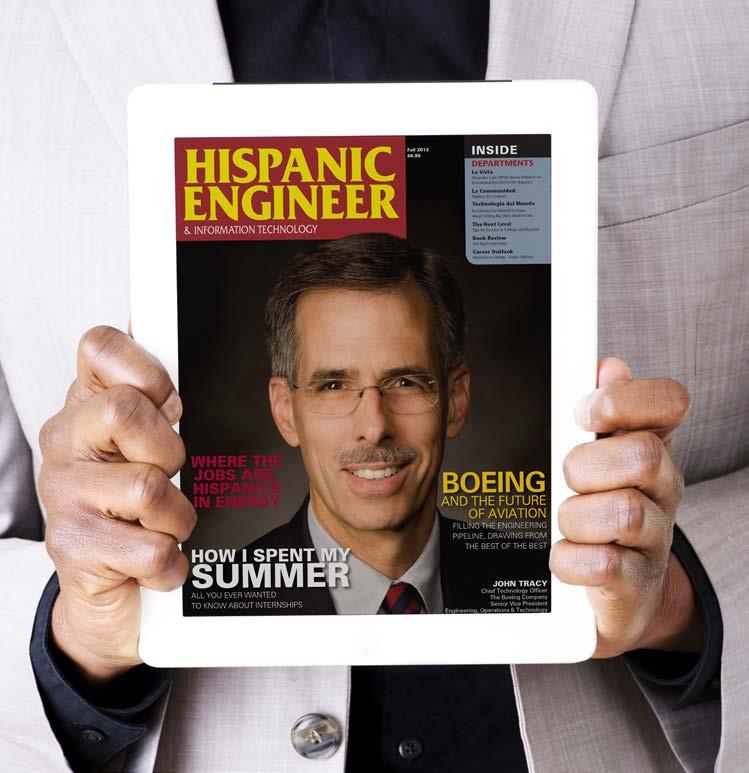
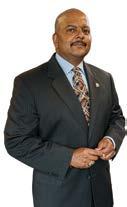






Rby Frank McCoy fmccoy@ccgmag.com
eady your resumes for the energy sector’s most expansive job market. The discovery, extraction, production, refining, alteration, distribution, transportation, and marketing of all type of oil, natural gas, wind, water, solar and alternative power sources to the Earth’s 7 billion inhabitants depends upon your ability to meet increasing energy desires and needs.
Hispanic Engineer & Information Technology has gathered a diverse sampling of pathways that may help to expand your energy horizon, and your career.
Everyone profiled below received all, or a critical part, of their STEM education, and invaluable internship contacts, while studying at one of the nearly 240 Hispanic-serving Institutions. These men and women expect you to replace them at their organizations, which include global oil and natural gas companies, utilities, chemical companies, research facilities, and entrepreneurial ventures. Are you up to the challenge?
Alstom Grid
Massimo Nardi
B.S. Degree in Electrical Engineering, Florida International University
Last February, Massimo Nardi joined Alstom Grid. The international firm involved in hydro, nuclear, gas, coal, and wind power transmission and smart grid technology was likely impressed with his background. Previously, Nardi was a product manager, systems application manager, and a sales engineer for ABB, the power and automation technology giant. In 2011, Nardi, who is fluent in English, Spanish, and Italian, presented a paper on distributed generation and its impact on power grids and micro grids protection at the Western Protective Relay Conference.
BP
Sara Salvesen
GPO Deepwater Developments Subsea Lead Planner
B.S. Degree in Industrial Engineering, Polytechnic University of Puerto Rico
Sara Salvesen assumed her present position in February 2013. During that year, Salvesen also won a BP Global Projects Organization third quarter Circle of Distinction Award for her outstanding contributions. Over the two previous years, she had been an alternative energy lead planner at BP. The company, a global producer of oil and gas, has about 20,000 employees in the United States.
Charlie Souza
Project Manager
B.S. Degree in Electrical and Electronics Engineering, Centro Universitário da Cidade
M.S. Degree in Electrical Engineering, Mississippi State University
M.S. Degree in Petroleum Engineering, University of Houston
Professional engineer Charlie Souza is a project manager in the small projects team of the Gulf of Mexico unit of BP’s U.S. pipelines and logistics group. Souza, who has onshore and offshore experience in up-, down-, and midstream segments, gained his position in 2012. The pipelines and logistics unit supports onshore and offshore crude oil and natural gas pipelines that production from BP offshore platforms.
Operations Mechanical Engineer
B.S. Degree in Mechanical Engineering, The University of Texas at El Paso
M.S. Degree in Mechanical Engineering, The University of Texas at El Paso
As operations mechanical engineer, Gerardo Vargas stays busy. He supports offshore operations of the Mad Dog Production Drilling Quarters, specifies materials technical requirements to execute projects, and maintains contact with offshore teams addressing issues related to static and rotating equipment including pump and turbine repairs, replacing damaged pipes, valves, and upgrading equipment. He has also worked as an offshore mechanical engineer, and a project engineer in the Gulf of Mexico unit.
B.S. Degree in Chemical Engineering, California State University, Long Beach
M.B.A. Degree, University of Southern California
Aldo Aguilera had been involved in the energy sector for more than a decade prior to 2013, when he became the team lead for the process engineering central team at Chevron. From 2004, he worked, respectively, at BP as an operations superintendent for sulfur recovery and waste water, a business development analyst, a process engineer for waste water treatment, and as a production planner-dark oils, natural gas liquids, and gasoline blender.
Octavio L. Gonzalez
Power Systems Engineer
A.S. Degree in Applied Science, Mechanical Technology Power, Utility Operations Emphasis, College of Southern Nevada
B.S. Degree in Electrical Engineering, University of Las Vegas, Nevada
As an environmental health and safety coordinator, Octavio Gonzalez’s specialty is root cause analysis of electrical control systems, power generation, distribution, and high-voltage transmission equipment failure and testing. On the job, he provides reports for post-fault analysis, assesses auxiliary circuits, installations, protection relaying, and power transformer evaluations, troubleshoots, conducts field check-outs, verifies system functions, inspects power systems, and issues action item recommendations.
Jeffrey Edmonds
Electrical Engineer
A.S. Degree in Electrical and Electronics Engineering, Northwest Vista College
B.S. Degree in Electrical and Computer Engineering, The University of Texas at San Antonio
Jeffrey Edmonds knows San Antonio’s CPS Energy, the nation’s largest municipally-owned energy utility, from the ground up. In 2004, nine years prior to his current job as an electrical engineer, Edmonds had already served as a CPS wireman electrician, utility worker, and distribution journeyman trainee. Then he earned associate and bachelor degrees which propelled him to electrical engineer, fossil generation operations, reliability engineer, and electrical engineer.
Javier Gonzalez
Electrical Engineering Design Lead
B.S. Degree in Electrical and Computer Engineering, The University of Texas at El Paso
M.S. Degree in Electrical and Computer Engineering, Purdue University
Since 2008, when Javier Gonzalez was hired by Cummins, a global power leader designing, manufacturing, selling and servicing diesel engines and related technology, he has risen from service engineer to senior electrical engineer to electrical engineering design lead for Cummins Power Generation. Gonzalez defines system architecture, manages system/subsystem issues, and technical profiles for assigned subsystems, selects required components, creates design plans and validation and report plans, complies with codes and standards, and presents design reviews to cross-functional groups.
Joe Ugarte
Vice President Global Sales - TESCOM
B.S. Degree in Mechanical Engineering, The University of Texas at Arlington
M.B.A. Degree-International Management, The University of Texas at Dallas
Joe Ugarte joined Emerson in 2004 as plant manager/general manager-Mexico. In 2014, he became V.P. global sales of the TESCOM brand. It provides a multiplicity of standard and custom engineered regulators, valves and systems. Emerson Process Management (EPM) helps firms to automate their production, processing and distribution in sectors including oil and gas, refining, and power. Emerson, a diversified global manufacturing and technology company is EPM’s parent.
Robert Vera
Staff Completion Engineer – Eagleford
B.S. Degree in Chemical Engineering, Texas A&M University-Kingsville
In 2004, Robert Vera graduated from college and joined BJ Services. It was the first of five energy-related companies to employ Vera prior to joining EP Energy—a Texas-based oil and natural gas producer—in 2013. During his climb up the ladder, Vera worked as a field engineer, district engineer, completion engineer, and an asset engineer. Completion engineers, also known as subsurface engineers, work with drilling engineers. Vera is a member of MAES: Latinos in Science and Engineering, Inc.
Hector Bejar
Regional Operations (South Texas)
B.S. Degree in Electrical Engineering, University of Texas- Pan American
Since last November, Hector Bejar has managed and overseen the operations and maintenance of Exelon’s wind power regional fleet. Exelon has 44 wind projects in 10 states that “can produce nearly 1,300 megawatts (MW) of clean energy.” For eight years previous, Bejar was a Field Service Engineer who installed, troubleshot, and, scheduled corrective maintenance on electronic-electrical and mechanical equipment including VACIS (Vehicle and Cargo Inspection Systems), Exploranium RPM’s (Radiation Portal Monitors), Automated Gated Systems (AGS), and Reveal CT-80DR Baggage Inspection System.
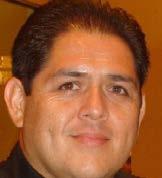
Bernardo Munoz
CEO
B.S. Degree in Electrical Engineering, California State University-Los Angeles
M.S. Degree in Business Administration, University of Phoenix-Southern California
Bernado Munoz went green more than 40 years ago. His mechanical, electrical, and plumbing (MEP) and civil engineering company specializes in green building and green/sustainable energy projects. Projects have included transportation (light rail, bus facilities and airports, multi-residential, mixed use, commercial, healthcare, industrial, and environmental facilities. GSE is in the “renewable energy field (solar, thermal hot water, wind, and bio-mass energy), and projects have included solar farms and thermal hot water systems for commercial and residential dwellings.”
Fernando Vigil
President and PV System Design Engineer
B.S. Degree in Electrical Engineering Technology, New Mexico State University
M.S. Degree in Energy Systems Engineering, Arizona State University
Fernando Vigil planted the seed for the 2010 founding of his Mesa, Arizona, company, Industrial Solar Consulting, years earlier. While at Arizona State University’s Photovoltaic Testing Laboratory, Vigil learned how to use photovoltaic engineering, design, research, installation and integration to connect solar and renewable energy power sources into industrial systems. Since then Vigil has focused on off-grid systems apps for six sectors: military, telecommunications, railroad, and oil and gas, homeland security, and disaster relief.
Judy Clark
Senior Project Manager
B.S. Degree in Mechanical Engineering, University of Houston Mechanical Engineering, The University of Texas at Austin
It is logical for Judy Clark to manage downstream engineering operations at KBR, one of the world’s leading engineering, procurement, construction and services companies. Since her first engineering post at Bechtel, she has used wisely the broad and deep experience gained in the oil and liquid natural gas, refining, and petrochemical sectors. Clark has held leadership positions at Halliburton, Kellogg Brown and Root—where she spent 15 years—ICF Consulting, and her most previous employer, Jacobs Engineering.
Marco Sanchez
Long Term Contracts Sales Manager
B.S. Degree in Industrial Engineering, University of Central Florida
M.B.A, Professional Track, University of Central Florida
Since adding an MBA to his engineering degree, Marco Sanchez has seen his career rise and horizon broaden at Mitsubishi Hitachi Power Systems. He began at Mitsubishi as a contractor/consultant in 2008. Then was advanced to a commercial operations engineer. Next stop was regional sales manager US. and Canada West Coast. Then in 2011, on to regional sales manager for Latin America, and recently his present position attained in January 2014.
Katherine Fernandez
Windows System Administrator, Senior
B.S. Degree in Computer Engineering, California State University-Fresno
The former president of the Society of Hispanic Professional Engineers-Fresno Professional Chapter is responsible for a 15-member team that controls every aspect of PG&E system management, updates and compliance for a company comprised of more than 20,000 systems. She also directs the giant utility’s comprehensive strategy regarding systems management. Fernandez was promoted to her current job in 2010. For the three previous years, she had been a senior computing specialist.
Andre Uribe
Vice President of Business Development
B.S. Degree in Electrical Engineering, University of Central Florida
When Andre Uribe left the U.S. Navy, he followed a path to entrepreneurship and education. The former taught him about management, finance and marketing and the latter provided his engineering skills. Uribe learned from the combination, plus a job with Progress Energy, that there he could create Power Grid Engineering to provide engineering and consulting services in areas including protection and control, design, power system training, and transmission systems planning for power grids of 4/13/23kV distribution to 500kV transmission.
Christopher De Leon
Manager of Products & Services - Pipelines
B.S. Degree in Electrical Engineering, University of Houston
Christopher De Leon joined Rosen Group, based in Houston, in 2013. Rosen provides specialized technology and services to global energy markets. These include pipeline systems, plant and facilities, and related industries. De Leon brought with him a reservoir of knowledge and experience he gained during his previous four years at Energy Transfer. It is a master limited
partnership that operates about 56,000 miles of natural gas, natural gas liquids, refined products, and crude oil pipelines.
Kenneth Armijo
Thermal/Mechanical Energy Scientist
B.S. Degree in Mechanical Engineering, The University of New Mexico
M.S. Degree in Mechanical Engineering Thermal Science, University of California, Berkeley
Ph.D. Degree in Mechanical Engineering Heat Transfer Thermal Science
utilities that comprise the Southern Company hired this now six-year power industry veteran, who was promoted to distribution planner in June 2014. His new responsibilities include planning distribution systems to provide service to customers, cooperating with three other divisions to develop best operating and planning solutions for distribution systems, and using software to conduct distribution planning studies. Prior to Georgia Power, Velez worked for Aquasystems de Puerto Rico.
Francisco Guzman
Substation Apparatus Engineer
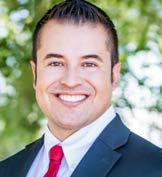
Kenneth Armijo is a researcher at Sandia National Labs in the photovoltaics research and distributed energy technologies development organization. Sandia’s, and Armijo’s goal, is to develop “cost-effective, reliable photovoltaic (PV) energy systems and accelerating the integration of PV technology in the United States and globally.” Armijo conducts photovoltaic systems research and development experiments for different high impact applications. Sandia National Labs is a multi-program laboratory managed and operated by Sandia Corporation, a wholly owned subsidiary of Lockheed Martin Corporation, for the U.S. Department of Energy’s National Nuclear Security Administration.
Alondra Perez
Systems Engineering Team Coordinator
B.S. Degree in Civil Engineering, California Polytechnic University-Pomona
B.S. Degree in Electrical Engineering, California State Polytechnic University-Pomona
In February 2014, Francisco Guzman was promoted to apparatus engineer at Southern California Edison (SCE). He had previously been an nuclear electrical engineer for six years. His mandate was to “provide design and project engineering for daily plant operations, modifications and upgrades while adhering to design basis documentation governed by Nuclear Regulatory Commission” and related agencies. From April 2012 to May 2013, Guzman was the lead project engineer for steam generator vibration and loose parts monitoring system upgrade. SCE is an Edison International Company.
Civil
B.S. Degree in Civil Engineering, Loyola Marymount University
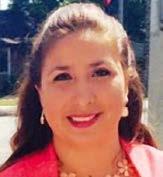
This year, Alondra Perez, joined Siemens in 2009, and was promoted to Systems Engineering Team Coordinator in the Industry USA Sector in five years later. The USA Sector includes automation, drive, and metal technologies, industrial control, industrial service and industrial software. Perez manages the project activities of six systems engineers. Before her promotion, Perez spent five years in Siemens Energy & Automotion as a systems Engineer II responsible for on-time software integration of Intelligent Transportation Systems and integration of Intelligent Transportation components, including traffic controllers, sensors and closed-circuit cameras.
Will Velez
Distribution Planner
B.S. Degree in Electric Power Engineering, University of Puerto Rico, Mayagüez Campus
In 2008, Georgia Power Company, the largest of the four
Adolfo Espino has been gaining experience in engineering and project management responsibilities within the public utilities sector for more than five years. These attributes include, managing civil engineering design contractors for multiple-year projects with engineering budgets ranging from $200,000 to $1,000,000, performing reforms site development engineering designs for transmission line projects in hillside areas including retaining wall design, hydrology analysis, and permanent erosion control.
Erica Ocampo
Sustainability & Advocacy Manager
B.S. Degree in Chemical Engineering, New Mexico Institute of Mining and Technology
Erica Ocampo, who became a sustainability and advocacy manager in 2012, has been with the $57 billion global specialty chemical, advanced materials, agrosciences and plastics businesses company since 2007. That is when she joined as a technical support and development engineer. Three years later, she was promoted to environmental specialist. Putting her education where her career is going, between 2010 and 2014 Ocampo completed sustainability and environmental management/sustainability studies at the Harvard University Extension School.

Acollege education is one of the major purchases you will make over a lifetime. But like cars and houses, the “business of university” comes with so many loan products and grant services it’s easy to get overwhelmed. Hispanic Engineer & Information Technology magazine (HE&IT) magazine asked the opinions of students, financial aid professionals, and STEM executives to get insights on everything from student borrowing to debt and financial aid programs.
Seven years ago, a Washington, D.C.-based public policy and advocacy organization found that nearly half of all student borrowers carried an average balance of $3,176 in credit card debt, and 58 percent of Hispanic college students are graduating with unmanageable debt. To raise awareness throughout college campuses and communities, the National Puerto Rican Coalition traveled across the United States and Puerto Rico coordinating various workshops to address the importance of credit building and financial literacy.
The first mistake that many students and families make is assuming they can’t afford to pay after looking at the sticker price of colleges or universities, said Erin Timmons, managing editor at the National Association of Student Financial Aid Administrators (NAFSAA). According to Timmons, author of “University Business: Less Debt, Easier Payback,” financial aid can significantly reduce costs.
But going by recent headlines that over 70 percent of undergraduates in 2012 left school with a diploma and debt, to the
tune of nearly $30,000 per person, and that student loan debt is totaling $1.2 trillion—surpassing both credit card and auto loan debt in size, it’s hard to see just how much of a reduction financial aid can make. In a recent interview with Inc.com, Mark Cuban, “shark” investor on the television series Shark Tank and owner of the NBA’s Dallas Mavericks, observed that colleges allow students/ potential students to borrow more and more money for tuition because it’s guaranteed by Sallie Mae and the government.
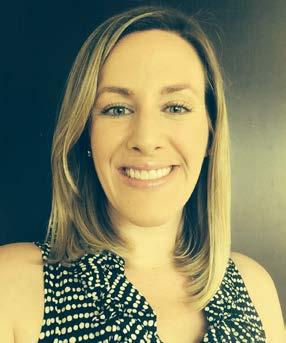
The flip side, Timmons noted, is that the way to avoid taking out loans is to start research early. Colleges and universities offer what they think students might need, but students are not obligated to take the full amount offered, she said.
“There’s so much spiraling around in the media about outof-control loan debt, and amounts that students are having trouble paying back,” Timmons said. “But NAFSAA wants to
remind students that there are scholarship and grant resources out there and if students start their research early to find financial aid they will probably defray some of their loans.”
A big proponent of financial literacy, NAFSAA, which serves nine out of 10 undergraduates in the United States and represents nearly 20,000 financial aid professionals at 3,000 colleges, universities, and career schools across the country, advises the first step should be finding out ways to pay.
NAFSAA’s toolkit has resources that can help, Timmons said. The “Students, Parents and Counselors” section on the website has an overview of financial aid—what it is and the difference between merit-based aid vs. needs-based aid—which is important for students to understand. Merit based aid is given to students who do exceptionally well in academics, music, athletics, or plan to have a career in an area that benefits the community or in career fields such as science, math or engineering. Needs-based aid is given to students who demonstrate a lack of financial resources to pay for college.
Knowing the difference starts with the Free Application for Federal Student Aid or FAFSA, Timmons said. “With that one application you can apply for financial aid at multiple colleges and multiple funding sources: federal, state, institutional and private providers.”
But until a bill passes to simplify the 108-question FAFSA, which has been described as intimidating and time-consuming by some U.S. senators, Timmons advises students to use the checklist backed with tips on NAFSAA’s website to limit delays and apply for financial aid every year.
“It helps because if there’s been a change in your circumstances—one of your parents has lost their job or illness has created new medical expenses going into your sophomore year—a new FAFSA form allows financial administrators to recalculate the amount they think you can reasonably claim.”
Through FAFSA, DongNghi (Donny) Hua, a Lockheed Martin Mission Systems and Training (MST) software engineering professional, was able to obtain more grants and loans. “Since this covered less than half of what I needed, I also applied for engineering scholarships through my university,” Hua explained.
Timmons added that it’s important for students to know that those colleges
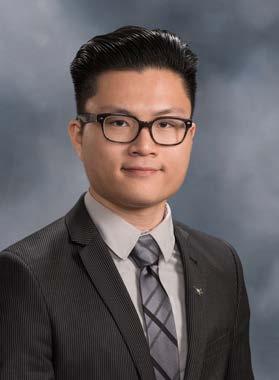
and universities which meet full needs are committed to ensuring students have the full amount of money to attend. However, at schools that are unable to meet full needs, students should do research to see what types of merit-based or needs based scholarships are available outside the university.
“The most important financial aid for me was scholarships,” said Pranay Tewari, a senior at Arizona State University majoring in finance and a 2014 DHL Global Forwarding’s intern in Tempe, Arizona. “There are many different scholarships offered in universities and students should apply for them,” he advised. “Scholarships have different requirements that need to be met but I used to treat those as goals I need to achieve each year.”
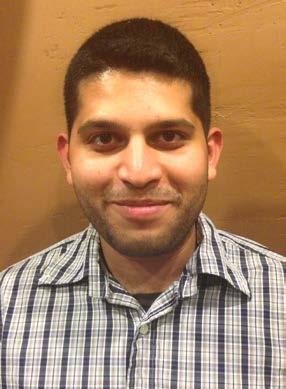
Mariana Sierra, a project manager in gas transmission at the Pacific Gas and Electric Company since graduating from the University of California Berkeley in 2004, applied for every scholarship and financial aid she could from the Bay Area in northern California to nationwide bodies such as the Hispanic Scholarship Fund.
“Our scholarship awards range from $500 up to $5,000,” said Vikki Gutierrez, director of marketing and communications for the Hispanic Scholarship Fund (HSF).
The HSF awards over 150 types of scholarships and has administered $430 million in scholarships since the organization was founded in 1975.
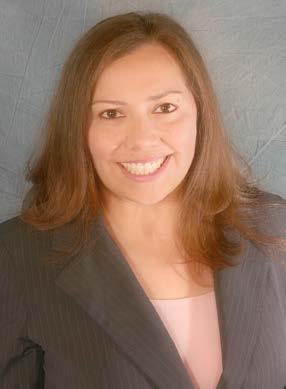
“We are also one of the administrators of the Gates Millennium Scholars program to the Latino population, which can pay for all four years and give a full ride all the way to Ph.D.”
Graduate Fellow Meline Baghdasarian is attached to the Center for Energy and Sustainability in the department of mechanical engineering at California State University, Los Angeles.
“My first scholarship was from the Boeing Company, and I was a NACME (National Action Council for Minorities in Engineering) scholar for several years,” she recalled. “Financial aid covered almost all my tuition when I was an undergraduate. When I got to graduate school, I received a fellowship from the Center for Energy and Sustainability funded by the National Science Foundation. This center fully funded my master’s degree. I also worked part time starting my sophomore year at school and then got a paid internship the following two summers.”
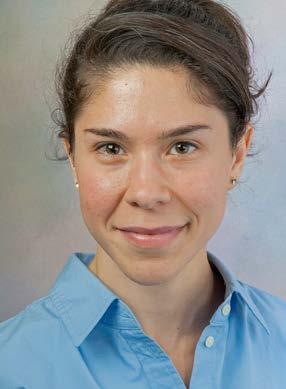
And if you have to take a break from your studies to work full-time, this can be a learning experience too. Norma attended the University of Houston (1998-2004) as a chemical engineering student and completed three co-ops at Dow Chemical. Then she took a break to work and save money to finish her education. She says that the time in industry taught her new skills and was very valuable.
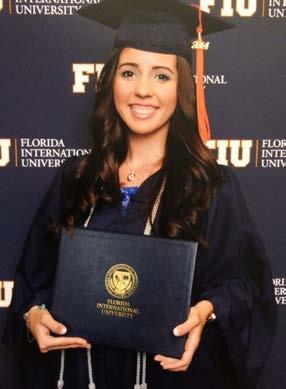
Twenty-something, Cuban-born Maria R. Martinez, who came to the United States in 2009 as a high school senior, recently graduated with a bachelor’s degree in civil engineering from Florida International University.
“I financed my entire career through scholarships, fellowships and grants,” Maria said. “During my undergrad, I obtained the Ronald McDonald Scholarship, Bank of America Scholarship, Jorge Mas Canosa Scholarship, Florida Structure Engineering Chapter Scholarship, American Association of Civil Engineers Scholarship, and Cuban American Association of Civil Engineers Scholarship, among others,” she said.
Norma Manzanarez, currently a chemical engineering student at Lamar University and summer intern at Bayer Material Science in Baytown, Texas, also took the initiative and applied for scholarships.
“There are many available,” she said. “Sometimes it is just a matter of searching for them and applying. It takes some time filling out applications, but it is worth it.”
In 2006, Stanford established a $10 million financial aid program for Latin American students. The Alejandro and Lida Zaffaroni Scholarship and Fellowship Program was partly funded by gifts from a group of more than 35 associates who credited Zaffaroni with providing inspiration, mentorship and friendship during the course of their careers. Zaffaroni, an innovator in biotechnology and drug delivery systems, and generous humanitarian with close ties to Stanford, died March 1 at age 91. His deepest personal satisfaction came from finding new ways to apply the findings of science to the treatment of disease and the prevention of human suffering.
As a freshman, Maria was a tutor in the Florida International University Student Support Service Office. During her sophomore year, while going to school full-time, she worked as a learning assistant in the Algebra Lab. She completed an engineering internship which opened doors to conduct research as a Ronald E. McNair fellow in the Titan America Structures and Construction Testing Laboratory under College of Engineering and Computing Dean Amir Mirmiran, who Maria says has been a mentor and a driving force in her success.
Maria continued working with the structural design team while undertaking internships including one with the Florida Department of Transportation, earning a coveted NACME Fellowship, a Florida-Georgia Louis Stokes Alliance for Minority Participation scholarship (FGLSAMP), and making the Dean’s list. FGLSAMP, a National Science Foundation Project, includes over 500 talented undergraduates in Science, Technology, Engineering, and Mathematics (STEM) majors.
Upon graduation, Maria plans to pursue a master’s in structural engineering at Stanford University, where she earned a fellowship and scholarship that will cover her tuition and living expenses.
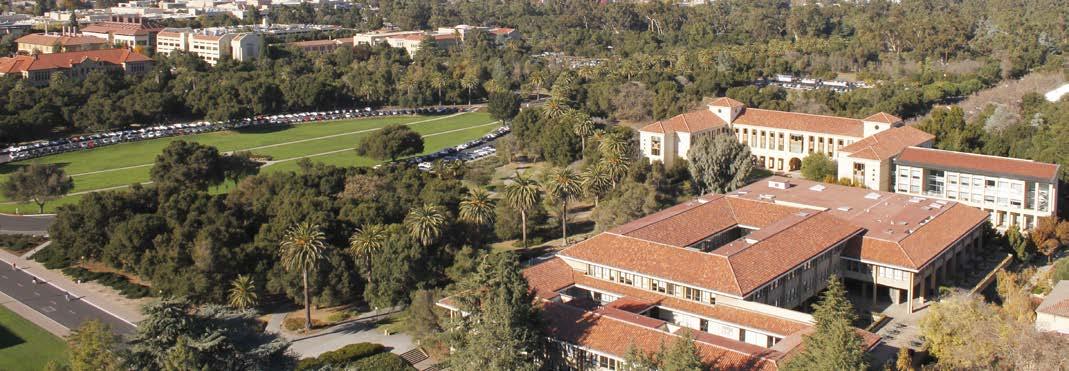




Bellevue College offers excellent job opportunities for faculty, administration and staff members. We provide great employee benefits, reduced tuition and a friendly work environment.
Bellevue is the 5th largest city in Washington where 40% of the population is of a minority race or ethnicity, 33% are multi-lingual and 60% have a bachelor’s degree or higher. Our campus is just 15 minutes from the creative hub of downtown Seattle with its thriving economy, renowned cultural scene and exceptional year-round recreational opportunities. Home to world-class pacesetters like Microsoft, Google, Amazon, Starbucks, T-Mobile, Nintendo and Boeing. We are also 15 minutes from the natural beauty of the mountains and the Puget Sound. And just 15 minutes in another direction from the home of the Super Bowl Champion Seahawks.
Bellevue College is a vibrant, innovative, inclusive campus community. We strive to offer our students an educational experience that reflects the diverse perspectives found in their future working environments. As the third largest higher-ed institution in Washington State, we open the door to more than 37,000 students each year. We’re a student-focused open-access institution, placing a strong emphasis on excellent teaching and small class sizes.
❱ Basic Skills, Running Start, Worker Retraining, & Continuing Education
❱ Six Bachelor’s Degrees with more in the pipeline
❱ Transfer Programs & Associate’s Degrees
❱ Professional & Technical Degrees & Certificates
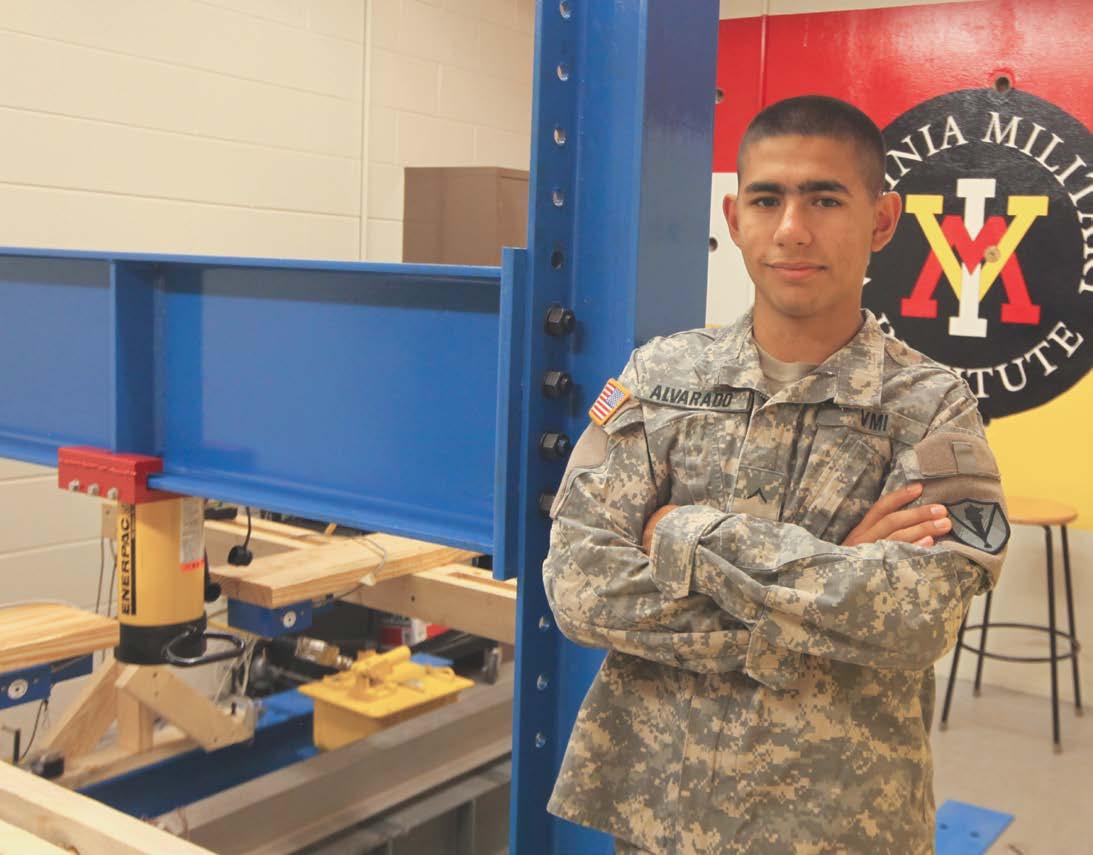

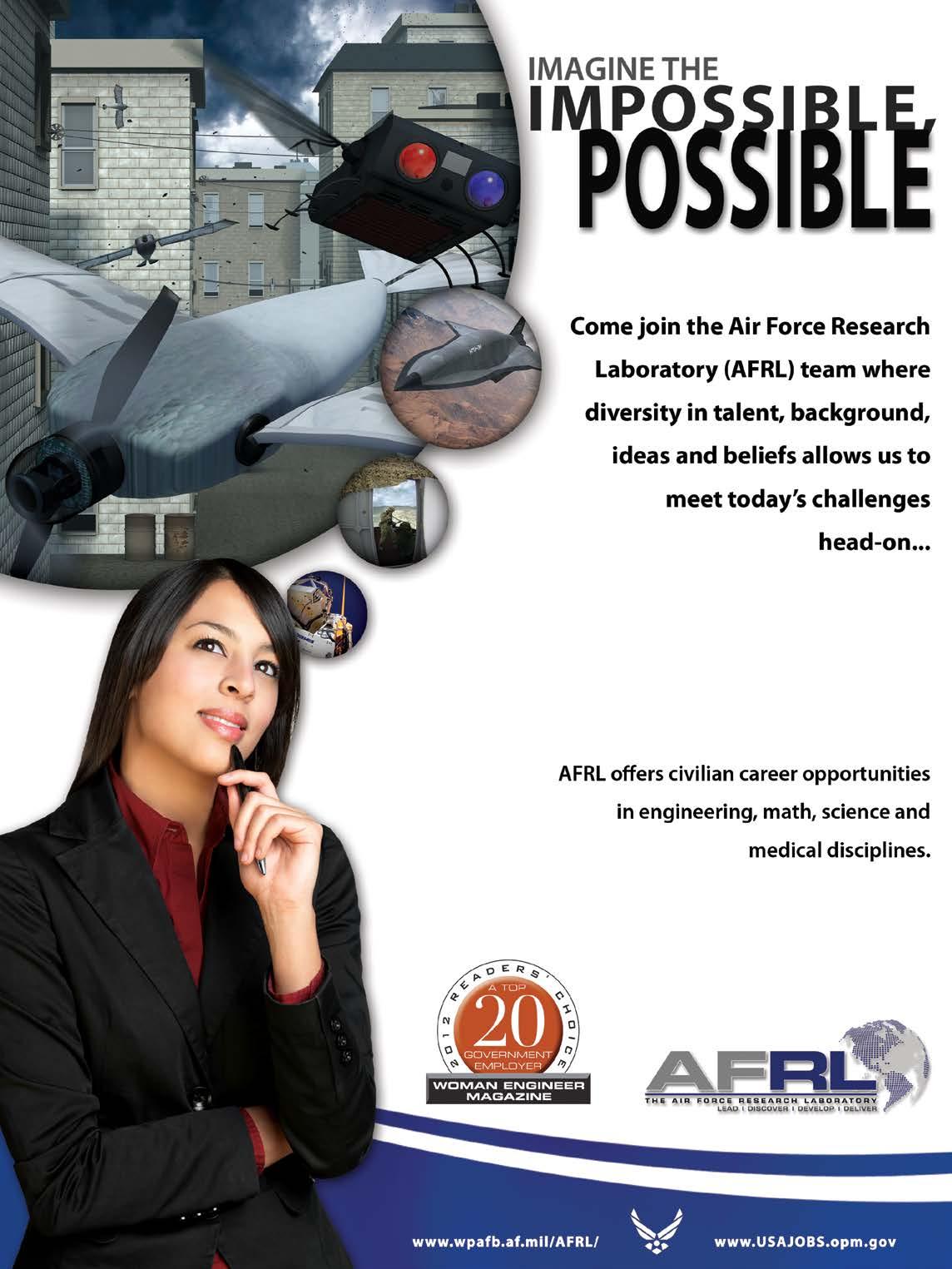


Raytheon takes on some of the most difficult challenges imaginable. Meeting those challenges requires a diversity of talent, ideas, backgrounds, opinions and beliefs. Diversity helps our teams make better decisions, build stronger customer relationships and feel more inspired, supported and empowered. It is both a catalyst and an essential advantage to everything we do.
